You could have the catchiest ad copy and the flashiest landing page in the world, but unless you have the proof to back you up and the testaments to prove it, you might not see the results you’ve been looking for.
You need people saying good things about your products or services (the social part of this equation), and you need them to back your business up on its great promises (i.e., the proof).
Sure, it’d be great if everyone could just take your word for it and instantly convert, but we know that it ultimately takes some convincing from other people who’ve already done business with you to nudge prospects in the right direction.
A lot of people make their purchase decisions based on this social proof and word-of-mouth. In fact, it’s one of the most powerful means of persuasion.
How powerful, exactly?
92% of people trust recommendations from others ahead of all other traditional forms of advertising when deciding to buy something.
In this article, we’ll cover the different types of social proof and provide our favorite examples so you can start generating the buzz that helps you take off. We’ll also cover the do’s and don’ts of social proof and how you can bolster your efforts to find that winning formula.
Let’s get the conversation started. 🗣️
Get brand new conversion strategies straight to your inbox every week. 23,739 people already are!
What is social proof anyway?
Derived from psychologist Robert Cialdini’s Social Proof Theory, social proof is when one’s decisions are based on the opinions and actions of others.
In other words?
It means potential customers are looking to other people to tell them if your products or services are worth buying. It’s what builds trust in prospects and inspires confidence in your brand.
Ever see a huge line and decide that whatever people are lined up for has got to be worth investigating?
What about when your favorite influencer snaps a photo of a new ice cream craze, and now you just have to try it, too?

This is the effect of social proof—and social proof is everywhere.
What are the benefits of social proof?
It goes without saying that social proof has an overall positive effect on your business. After all, it’s like a massive pep rally just for your brand. Let’s take a more detailed look at the top three benefits.
- Social proof builds trust with customers. Without social proof, there’s no way your potential customers can feel confident in their decision to buy from you. Once you earn their trust, you’re better positioned to earn their business.
- Social proof makes your business credible. Today’s consumers are more skeptical of doing business with a brand that has little to show for itself. Everything is digital, so there’s no shortage of research the average consumer will do to ensure they’re giving their money to a legitimate brand. (In fact, 87% of purchase decisions start with online searches and digging.) Social proof is exactly what’s needed to really make your brand credible and stand out from the rookies.
- Social proof can positively impact your sales. And this is what it’s all about, right? Social proof has the ability to increase conversion rates and positively impact your bottom line. One of our clients even increased conversions by 182% and decreased CPA by 59% through the power of video testimonials. Why not pack on the social proof to get in on the success?
32 examples of social proof by type
Long lines and influencers are just the tip of the social proof iceberg. There are a ton more social proof examples out there, some you might not even know about.
Luckily, we’re going to share 32 social proof examples to help inspire you.
By the end, you should be able to start curating social proof on your platforms to cement your reputation and skyrocket your sales.
Without further ado…
1. Expert stamp of approval examples
So, someone has arrived on your landing page. What better way to convince them to try out your offering than by showcasing its approval from the best in the biz?
Expert social proof is just what you need to prove the quality, safety, and efficacy of your product or service.
It’s mostly used by technical services and consumable products that need to convey they’re safe to try or fully vetted. Think SaaS, beauty and hygiene products, sleep treatments, health enhancements, etc.
Expert stamps of approval can come in many forms. You can showcase your expertise through blogs and guides from industry experts as McAfee does:
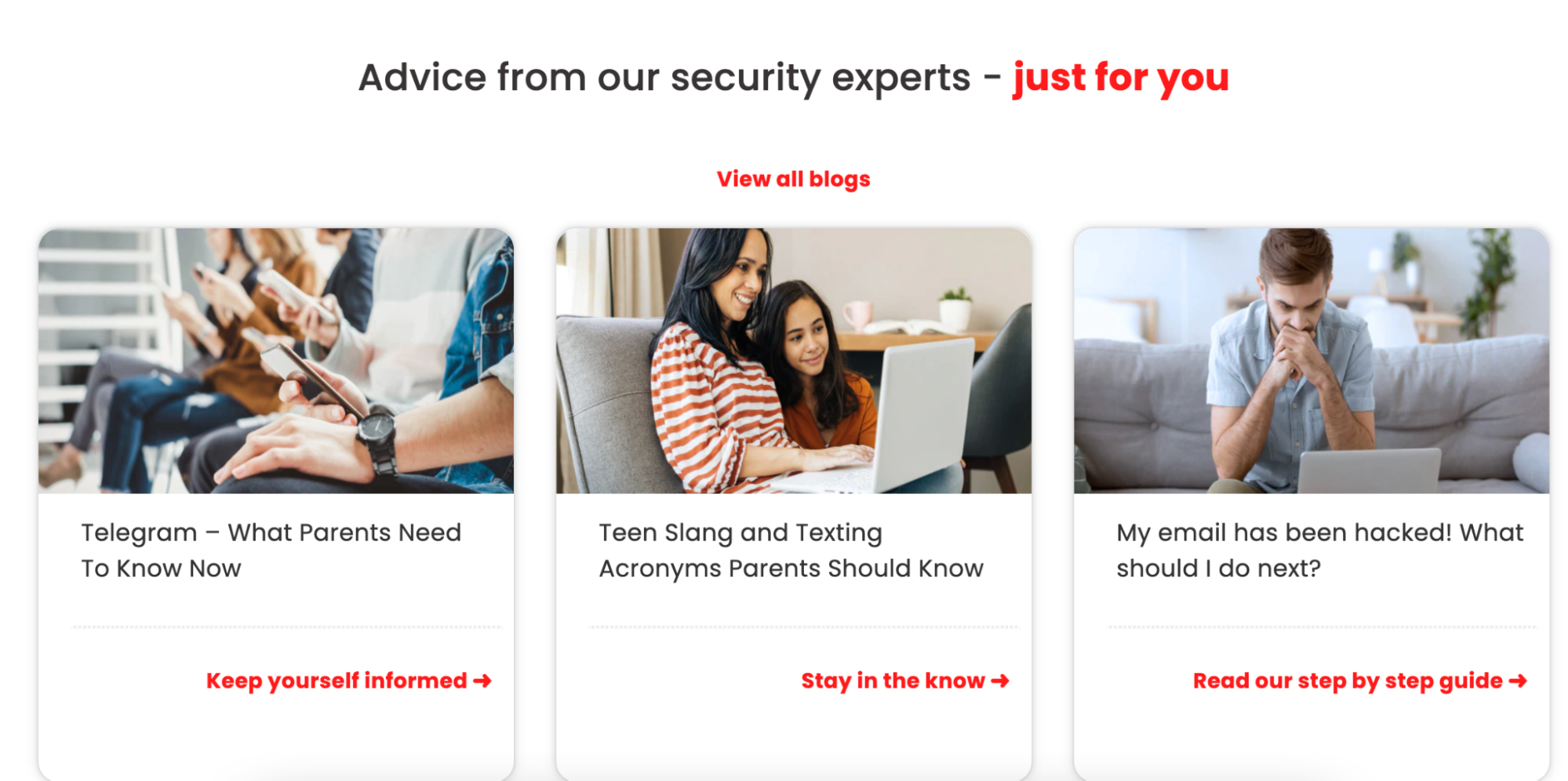
Better yet, what if you had the full backing of an entire industry like Sensodyne?
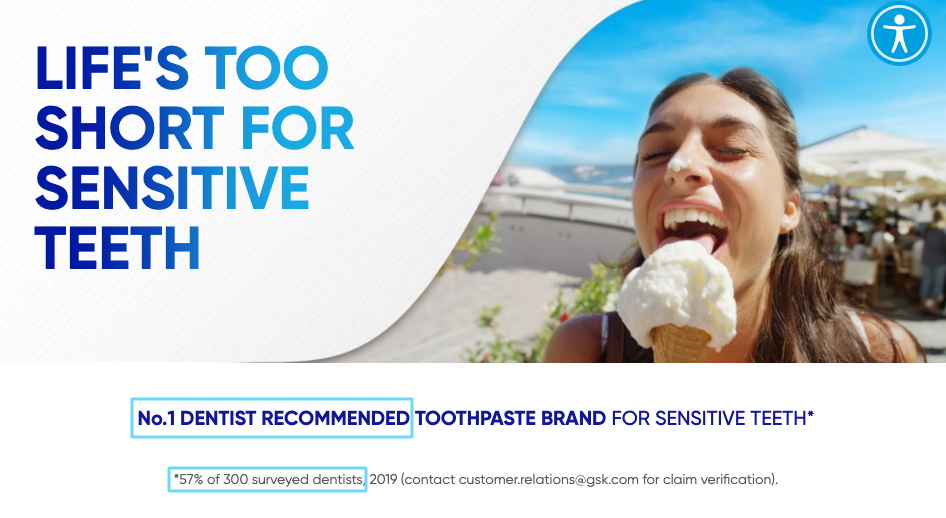
Popular men’s health company, Hims, also harnesses the power of an entire team of medical professionals and experts to back their products. (Note the use of real pictures of their MDs, too. Nice touch, Hims.)

2. Celebrity endorsements and industry influencer examples
Celebrity endorsements and influencer marketing are some of the most powerful tools in marketing today. In fact, Shopify tells us that 61% of consumers trust influencer and celebrity recommendations.
And for a good reason.
We’ve seen their movies or listened to their songs and over time, have grown to truly admire and feel connected to these people. As fans of a celebrity’s work or influencer’s content, we’re more likely to heed their words and follow in their footsteps.
Many people also want to feel and act just like their favorite celebrities.
Here’s how women’s shoe brand Stuart Weitzman uses the celebrity and influence of actress Kate Hudson to their advantage:
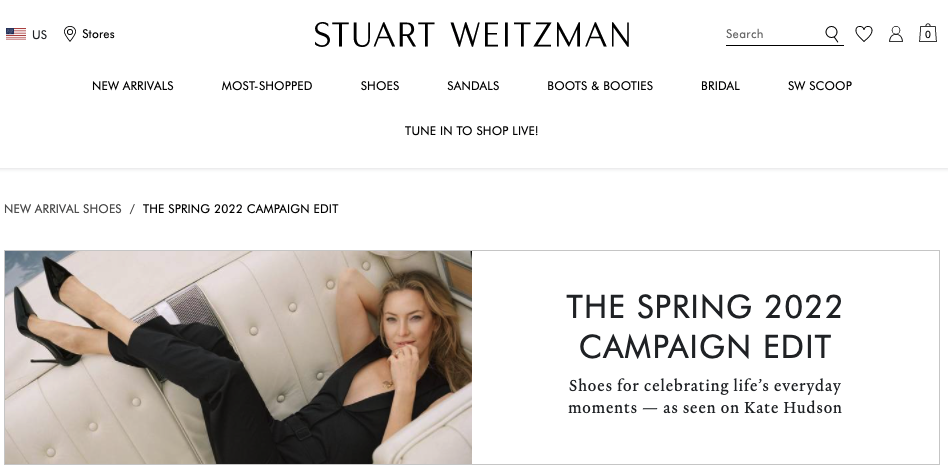
Other brands choose to work with social media influencers to hone in on a particular target audience.

Another way to partner with a celebrity and social media influencer is to create content for a shared audience.
Adidas, for example, partners with famous YouTuber and fitness mega-star, Adriene Mishler, in a blog on how to start yoga—perfect for the fitness-loving audience they have in common.
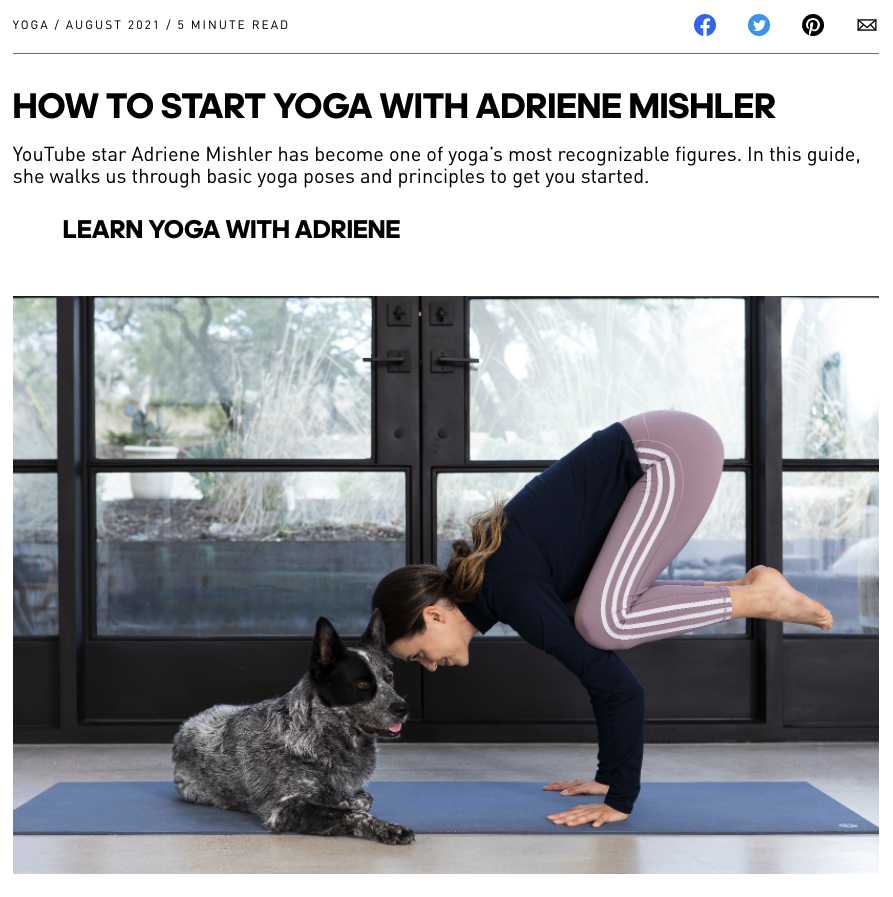
Adidas bets that many novice yogis are probably not at the studio. They’re probably typing the query, “how to do yoga,” into YouTube’s or Google’s search engine.
Why not create a blog of the same search query and partner with everyone’s favorite, trusted yogi?
Adriene’s channel, Yoga With Adriene, practically dominates both spaces (with a special emphasis on beginner and basic yoga fundamental videos. And yep, she’s wearing Adidas in almost every video).
As we learn how to do yoga and come to trust Adriene to teach us how to stand on our heads safely, we’re also going to trust the fact that Adidas is probably the brand of leggings to flow in.
3. Customer review examples
Customer reviews are about as real as social proof gets.
These are the opinions of everyday people who tried your product and have something to say about it. They’re not being bribed for their reviews (or they shouldn’t be, at least), and they’re not in a paid partnership with the brand (those are influencers). They’re just regular customers who have an honest account of their experience.
You might be wondering, “Are these opinions that important? Do I really need to publicize these on my site?”
The answer is yes.
A staggering 95% of consumers will actively consult customer reviews before making a purchase. How else would they know your product is worth buying or that it worked for others?
You can showcase your best reviews that come from other businesses like Zoom does here:
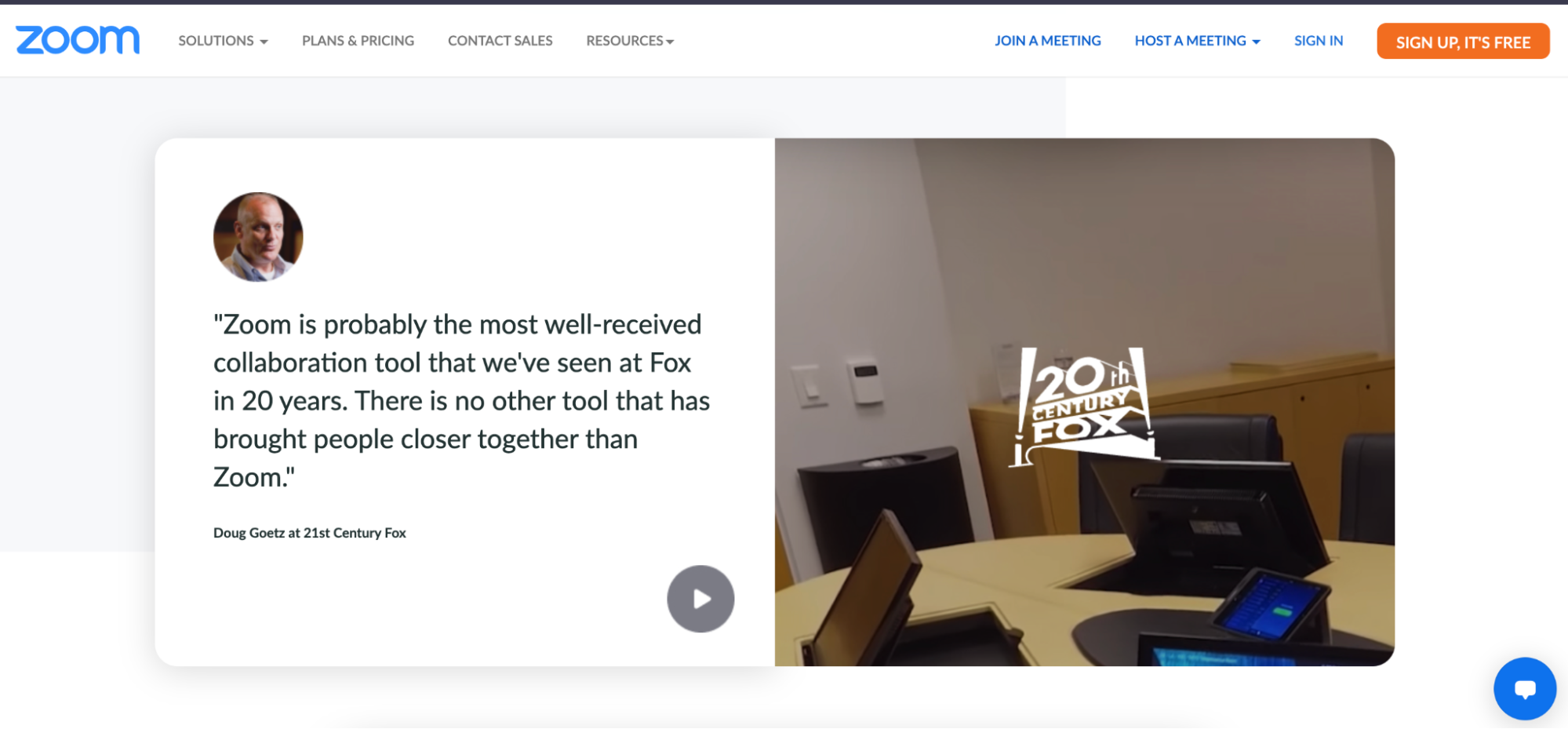
You can also showcase your reviews from individual customers in a carousel format just like Casper does.
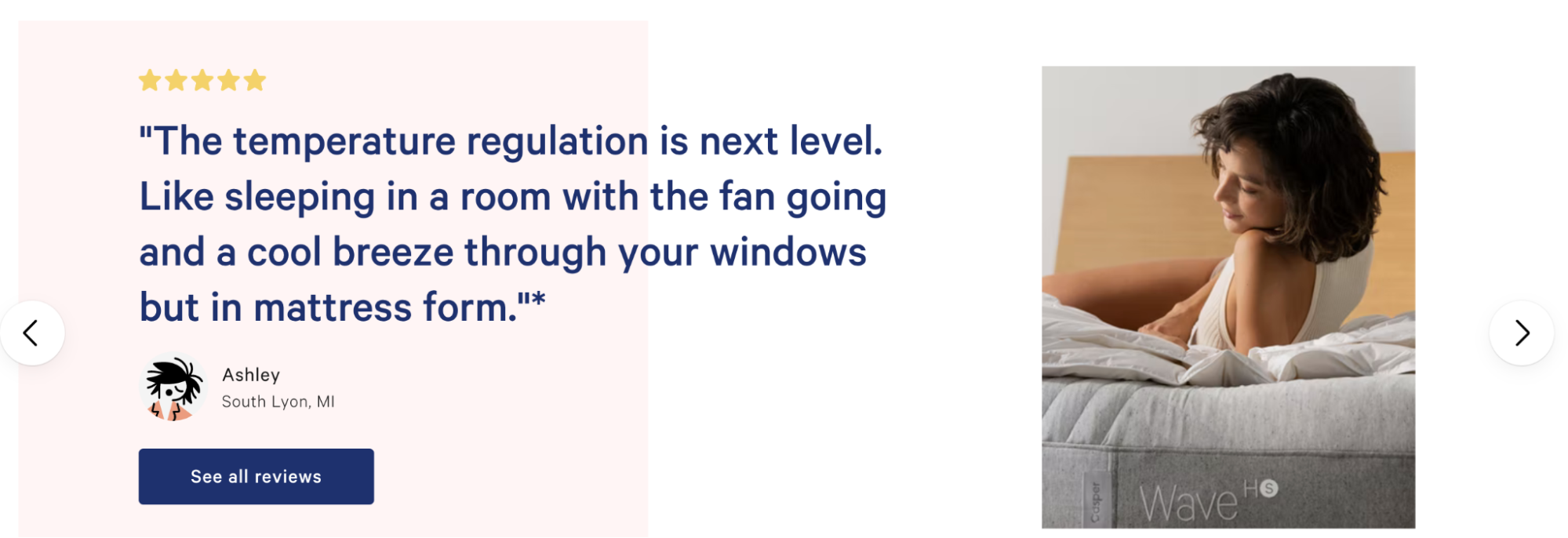
You might also want to consider having a page on your site specifically dedicated to all the reviews you’ve received.
That’s exactly what Peloton does on their website:
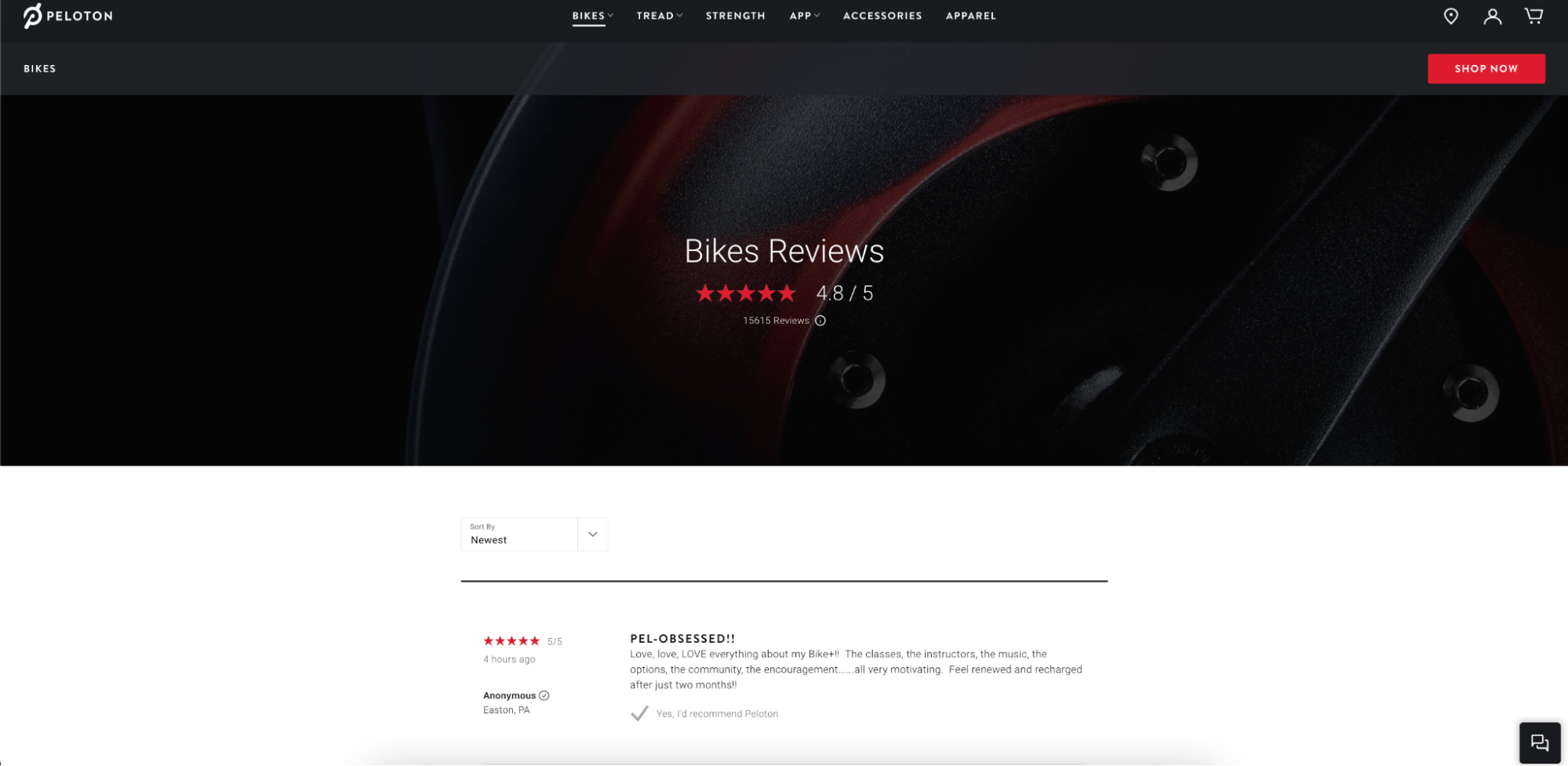
If you go this route, make sure to showcase the total number of reviews and average rating overall (those numbers are a form of social proof on their own).
Where to start generating customer reviews
Depending on your industry and niche, the review platforms you use to set up shop will differ. For the most part, you should aim to at least be on Yelp, Google My Business, and Facebook.
Here are a few other online review sites to explore:
4. FOMO or “just purchased” alert examples
When prospects see that everyone else is doing something or quickly purchasing a brand’s entire inventory, they’re more apt to act fast and follow suit.
No one wants to be the odd one out, and brands would be smart to leverage this fear of missing out (FOMO) as an opportunity to make a conversion.
FOMO can come in the form of showing how much of your product is left like Amazon does here:
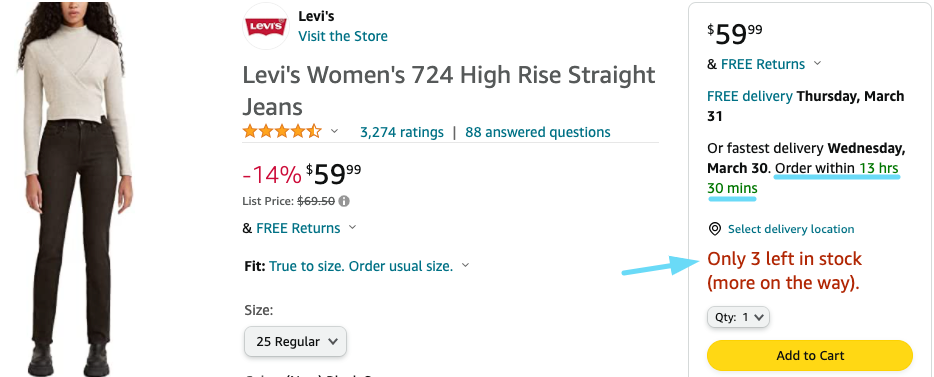
Besides this, FOMO can also come in the form of a sales countdown or limited-time offer. Madewell does this with their limited-time sale banner on their website:
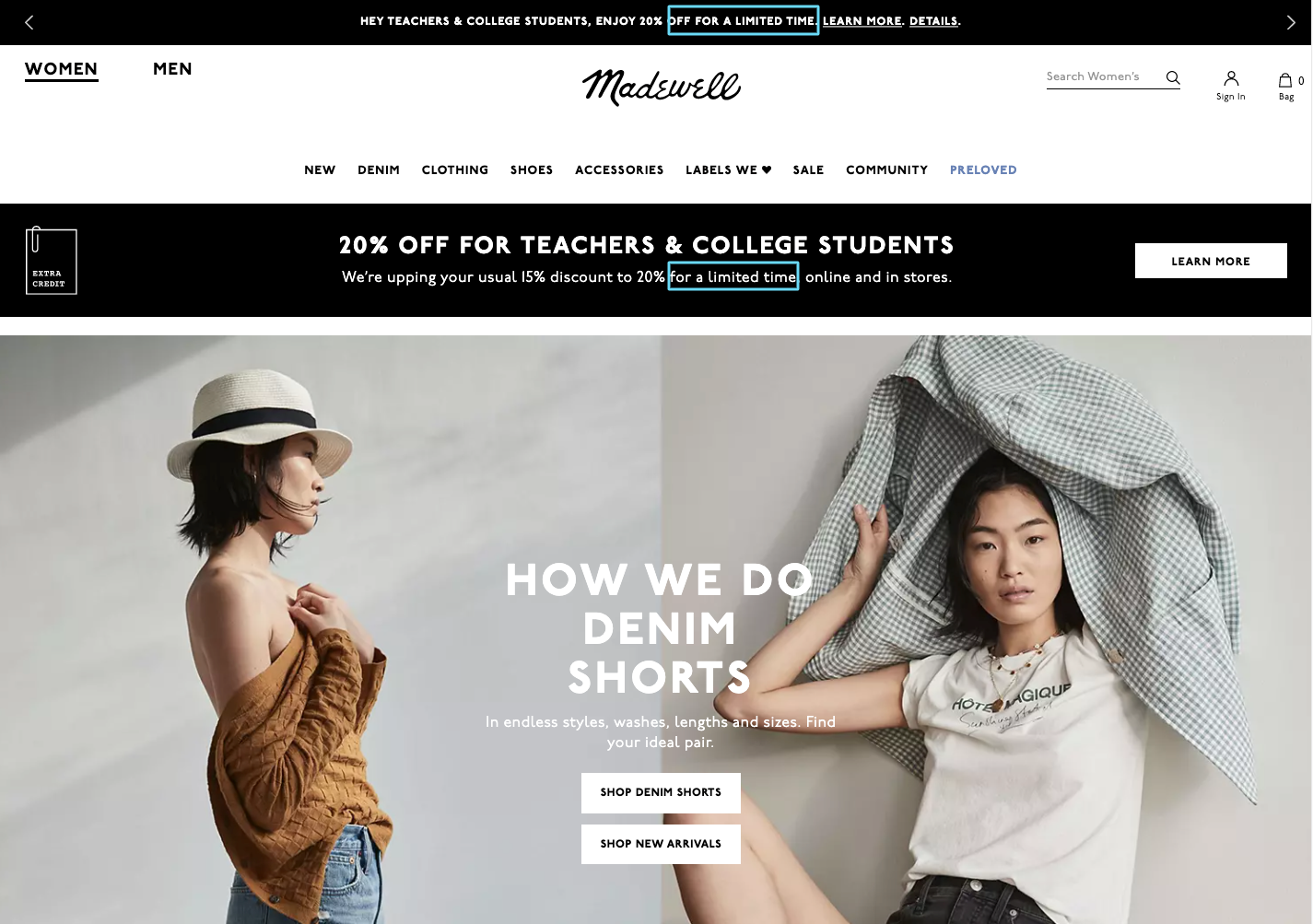
Another example is to let your visitors know when someone else has just purchased. By doing this, you’re reinforcing a group mentality.
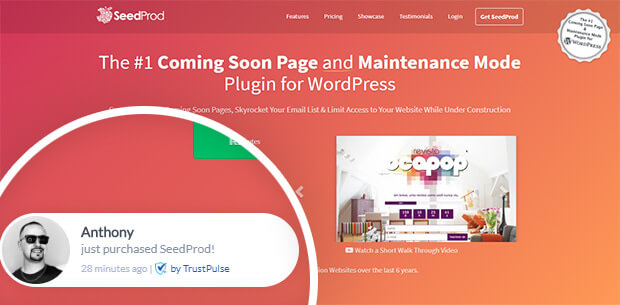
5. Case study examples
Case studies are often official reports that hone in on a specific client; they tell others about the situation, the goals, and the results from start to finish.
Case studies are often more suitable for SaaS companies, agencies, and service providers instead of eCommerce.
Take a look at how we present all of our case studies on a dedicated results page, for example. We also allow users to search through them with filters.
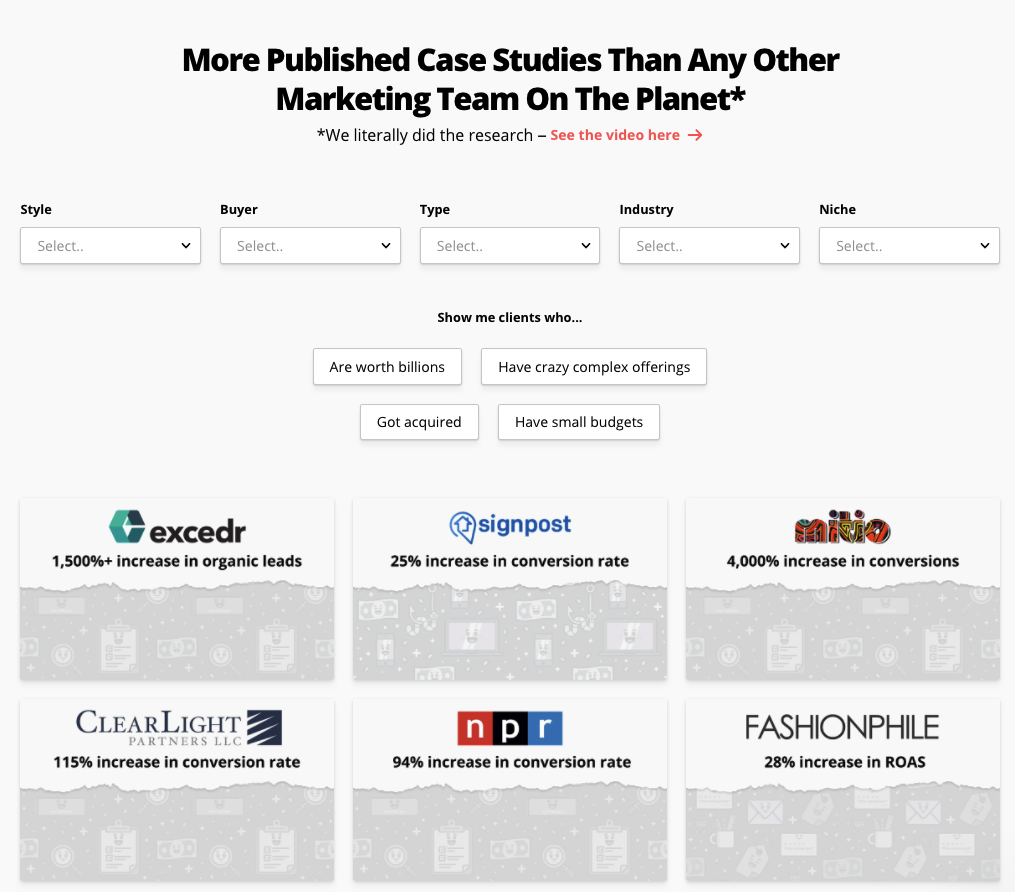
As another example, here’s how HubSpot shows visitors their bank of case studies:
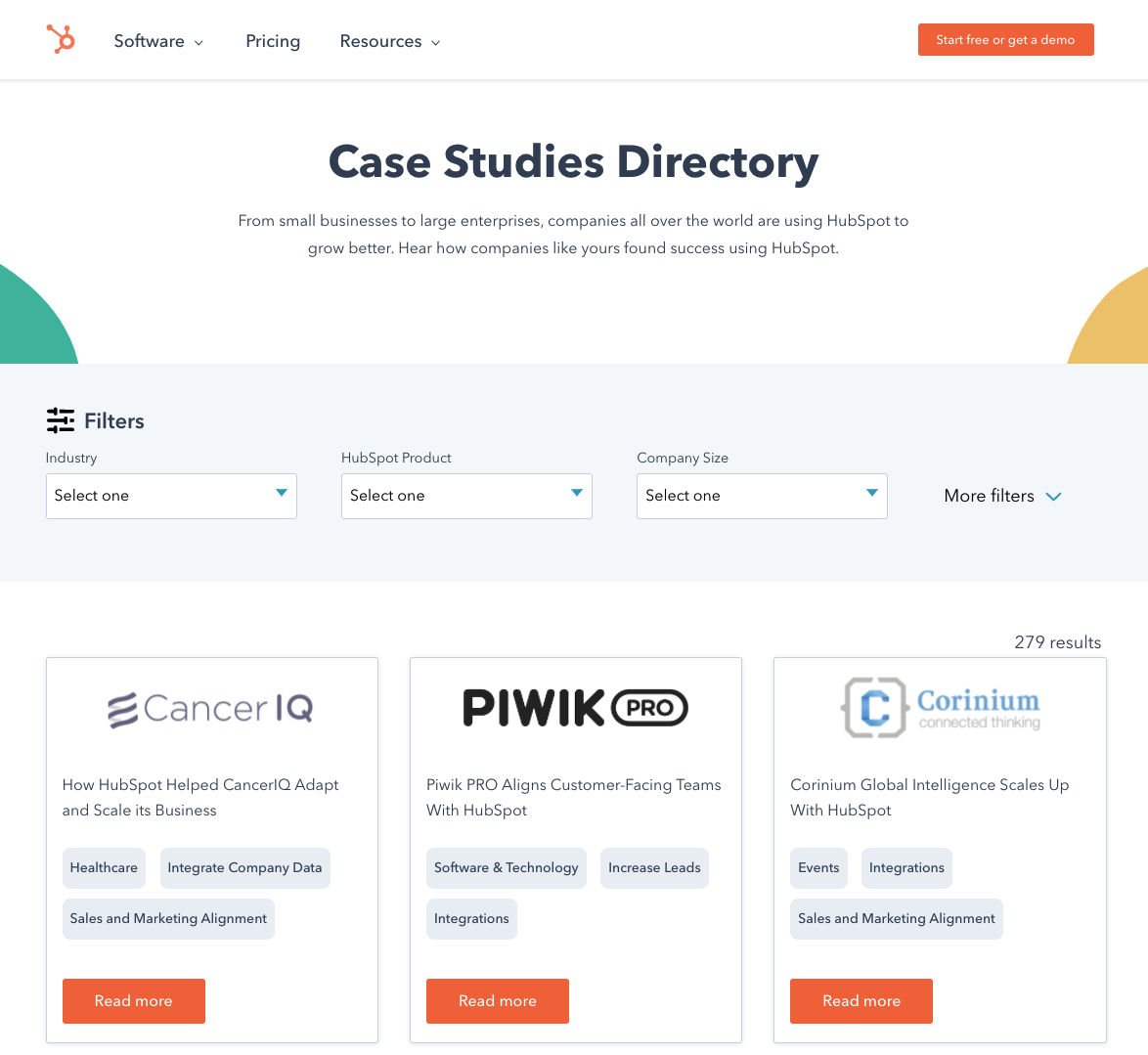
Prospective clients flock to case studies to get the technical details of how a company has helped others in similar situations.
And once they find a case study that resonates with their issues and sees that you solved those issues, they’ll be running to work with you.
Trust us: case studies work. We actually have the proof of how 100+ case studies helped us hit $10M ARR 😏.
We’ll also give you the secret on how to make a case study that will get you better results.
6. Credentials, certifications, and award examples
This social proof type is a sure-fire way to really cement your brand’s expertise and street cred.
A banner displaying your credentials, certifications, and any awards tells potential customers the level of excellence you have. It also shows your competitors what they’re up against.
If you’ve made it onto a leaderboard or rankings list, share that on your landing and product pages, too. That’s exactly what social media management company, Sprout Social, does below:
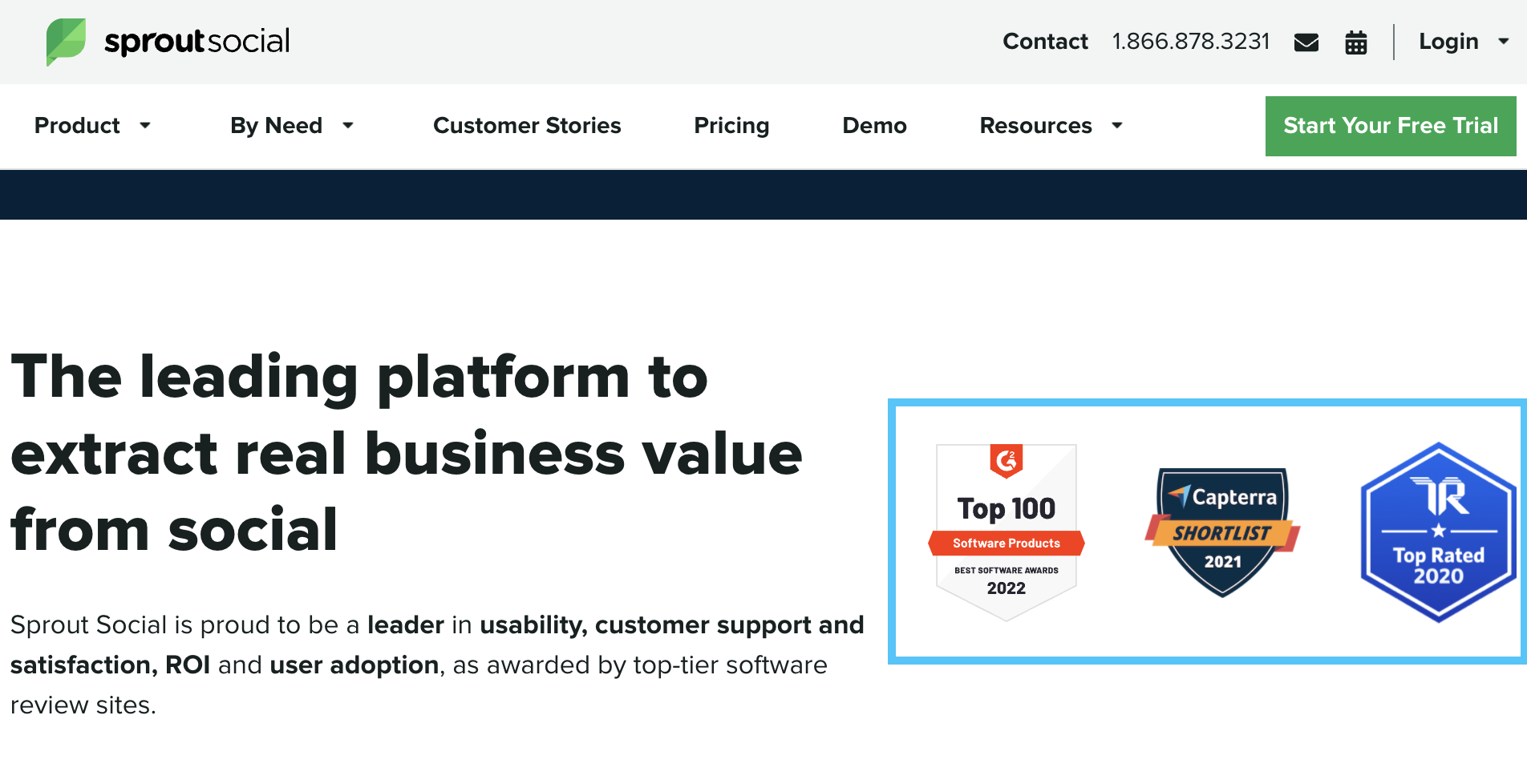
Don’t forget: Pay attention to when annual awards “expire.” You don’t want to showcase an award you’ve won too far back. When something is really outdated, you can send the opposite message and hurt your credibility.
Another way you can showcase any awards you’ve won is to create an omnipresent banner across every one of your pages.
Make it eye-grabbing, and don’t forget to link out to the press release or post to back it up. Here’s what the #1 place to work did below 😉:
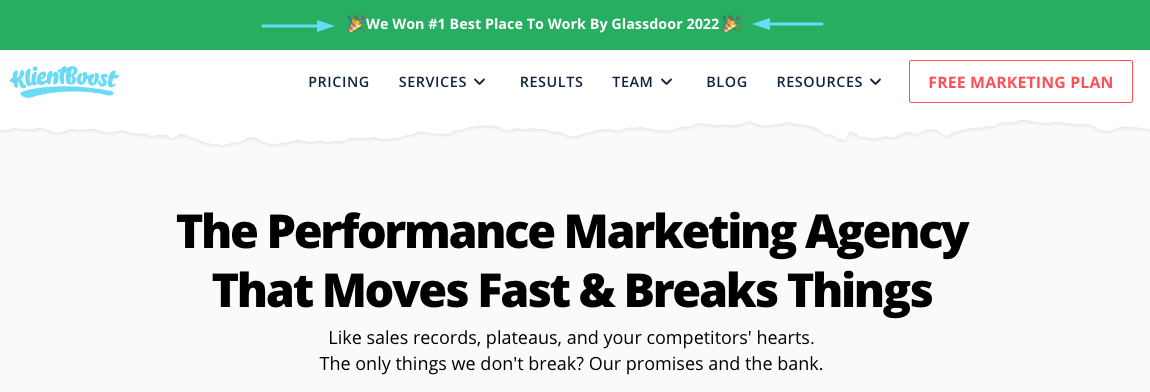
Any kind of verification is another excellent version of a credential that you should show off.
For example, Smile Brilliant showcases their exclusive Google Trusted Store Program verification.
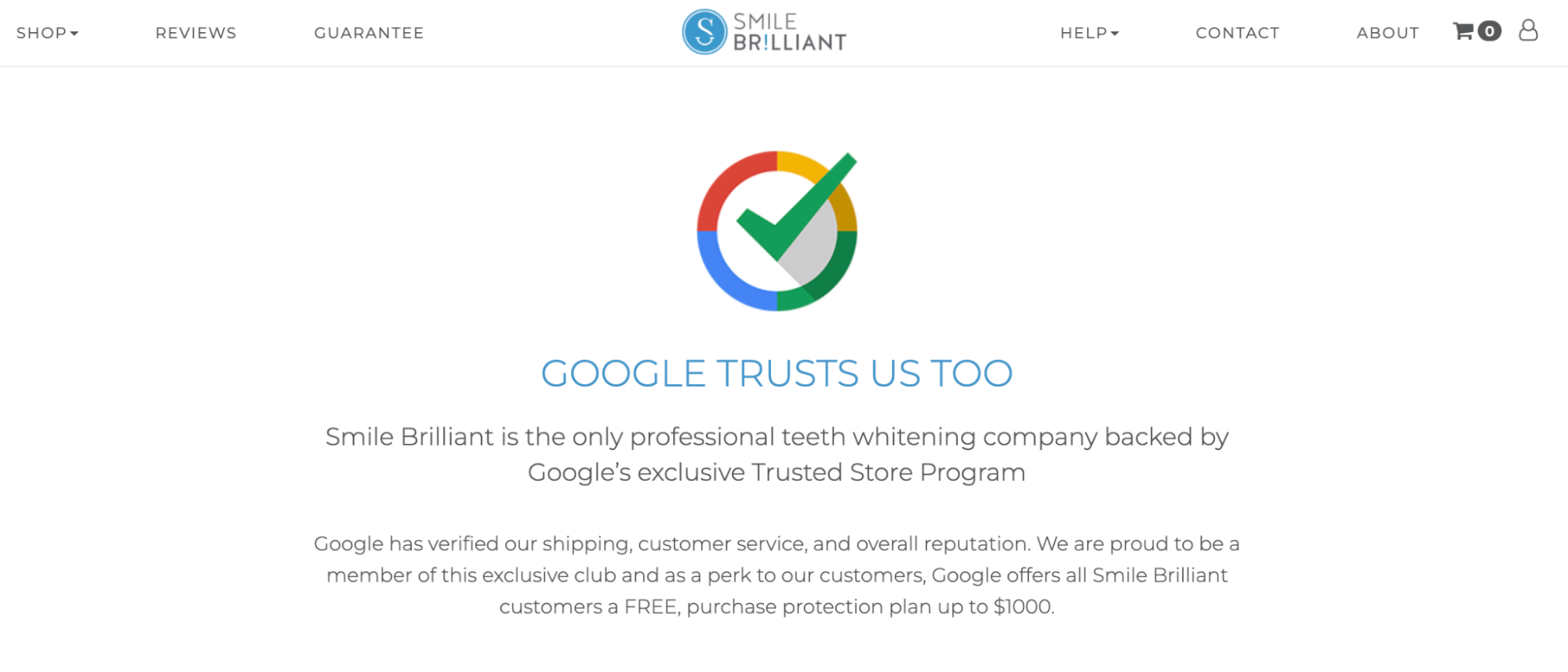
But what if you don’t have any fancy Google badges or trophies to showcase?
No problem.
You can still provide totally valid social proof in the form of a robust About Me/About Us page.
In the example below, this CPA (in this case: certified public accountant) tells potential clients what makes him qualified to help: his educational background, degrees, tenure, previous employers, and relevant association memberships.
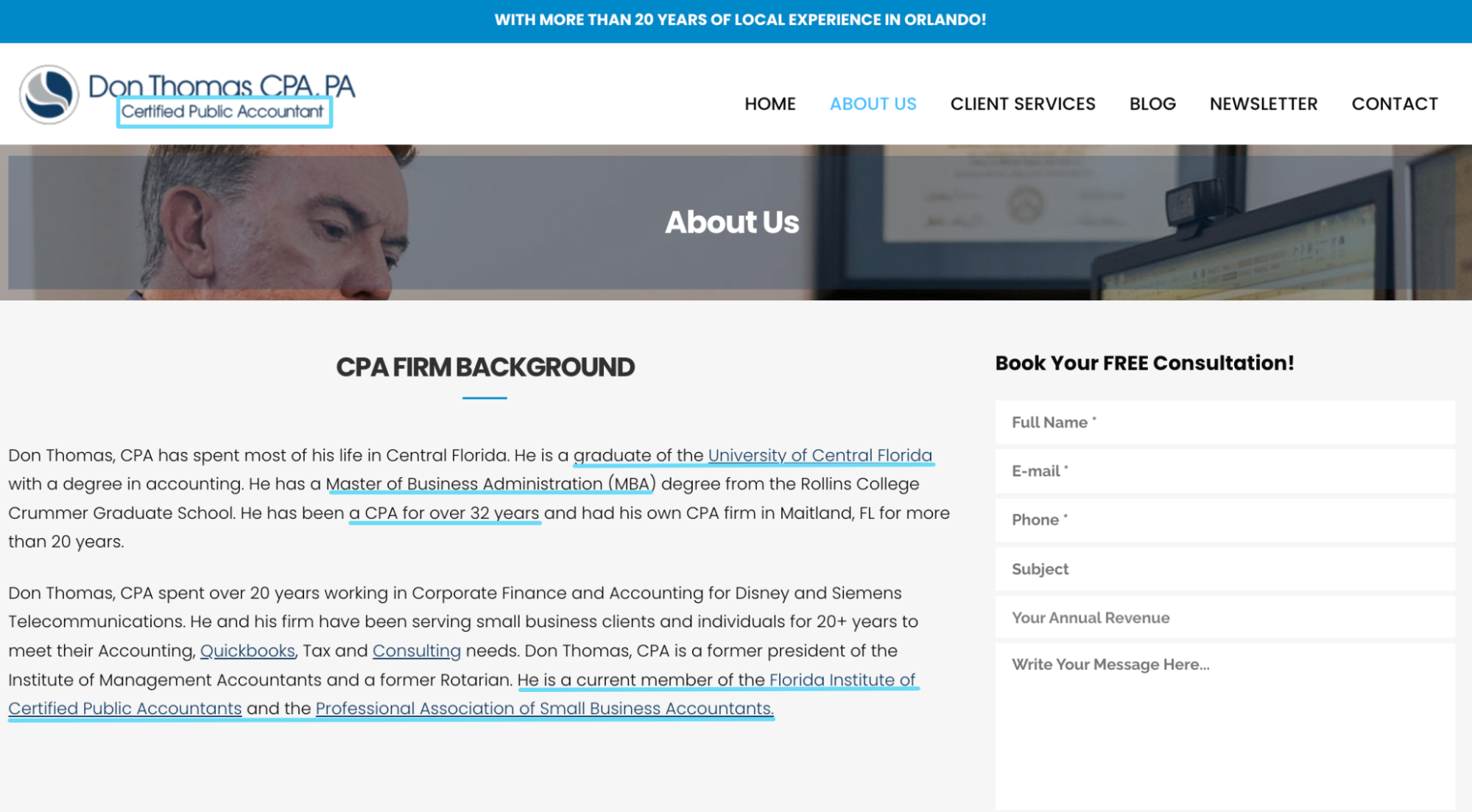
This may be more suitable for private service providers such as accountants, lawyers, freelance writers, etc., where industry awards don’t come around as often.
7. Customer/user testimonial examples
We know what you’re thinking: aren’t customer testimonials the same as reviews?
Not exactly.
While they’re definitely both forms of social proof and in similar veins, customer and user testimonials are a requested-and-provided account of their experience that often include data to express successful results. Customer testimonials are also likely to make an official recommendation (while something like a case study is more of an objective report).
On the other hand, reviews are open to anyone and might not have anything to do with results; they might just have to do with one’s personal opinion and can often be emotionally driven.
Customer and user testimonials can be an entire trove of videos like we’ve done here:
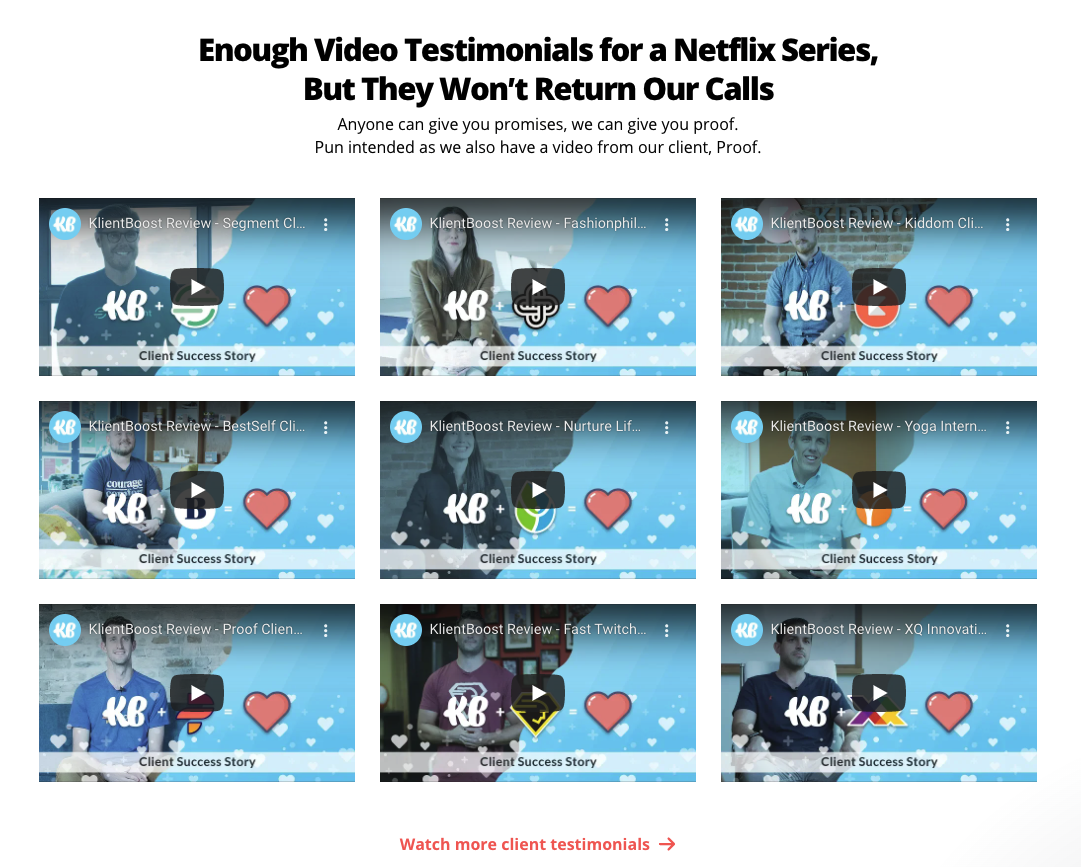
But what if you’re not exactly a service provider or agency?
Have no fear.
Testimonials are also great for those in beauty, health, fitness, and other similar industries where a before-and-after is common. Here’s an example from KraveBeauty:
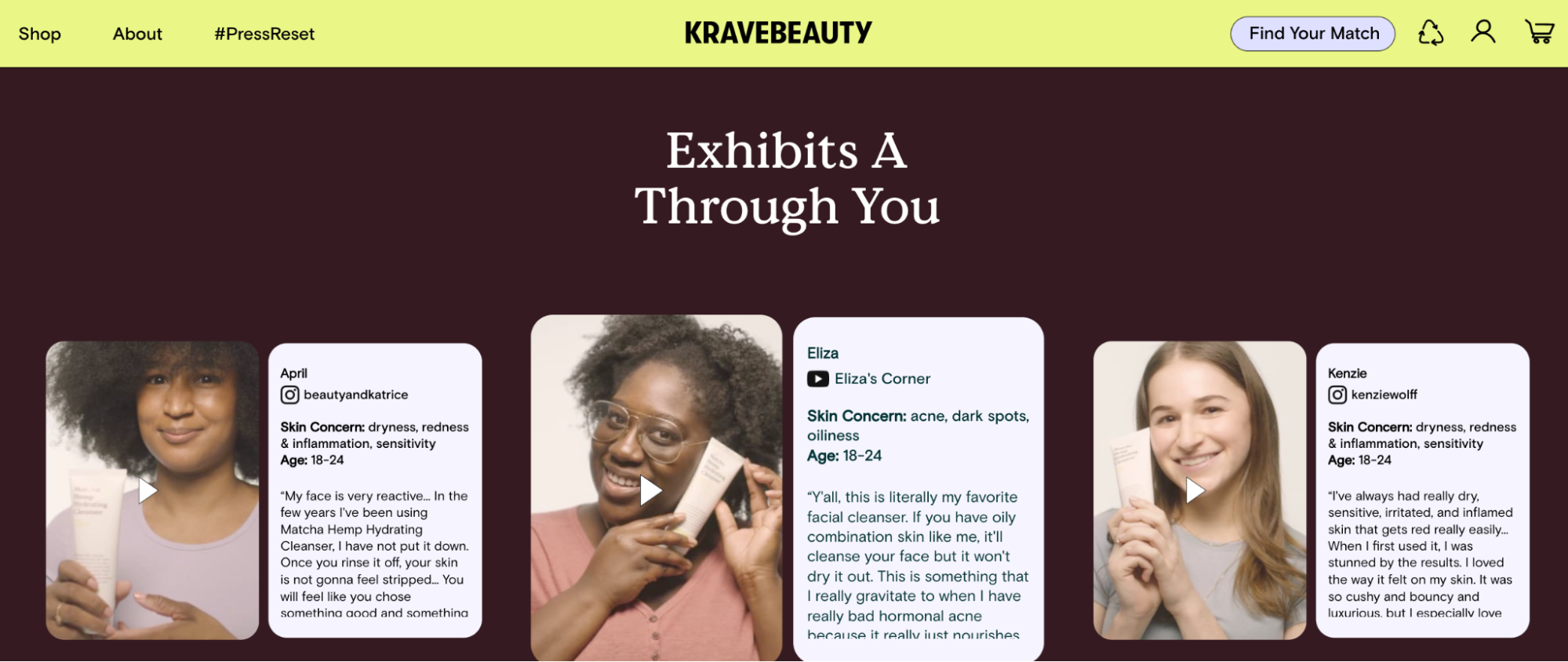
8. Social proof tally examples
Often placed on a product or landing page (but don’t worry, you can put them anywhere’s that’s best for your brand), social proof tallies enable visitors to immediately quantify your business’s success and effectiveness.
You could showcase your brand’s number of
- social media followers or social shares
- email subscribers
- recent sales or downloads
- products/services donated to a cause
- organizations you’ve helped or are partnered with
- employees
- years in business
- major milestones
- + so much more
Tallies are a tool for you to show off the sheer amount of success you’ve had. Take UserWay, for example.
UserWay boldly announces that their solution has been installed on over a million computers and loaded over 70 million times a day. These numbers are sure to instill confidence in any on-the-fence visitor.
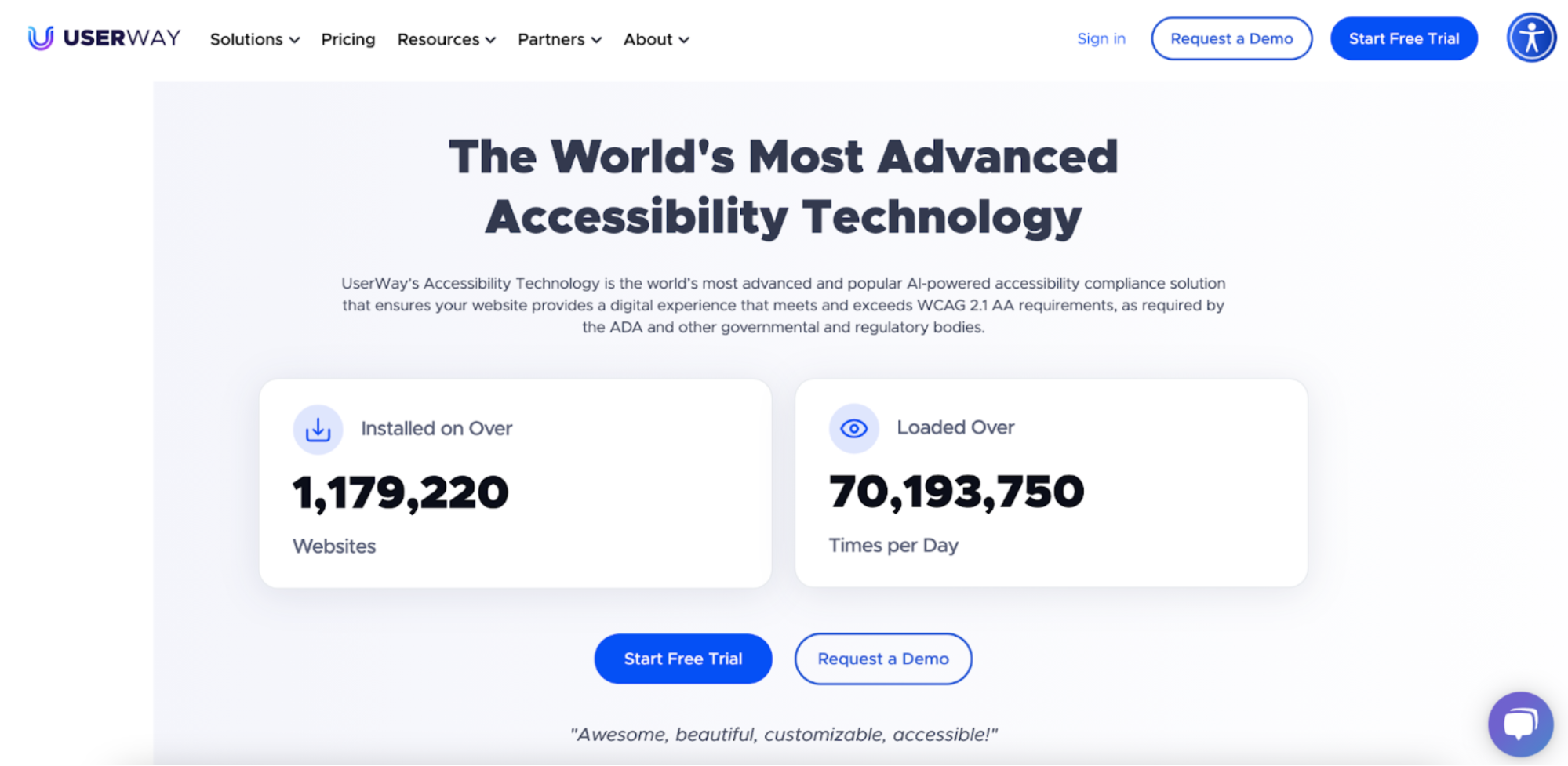
Let’s also look at how WOODCHUCK USA uses a social proof tally to show the number of trees they’ve planted.
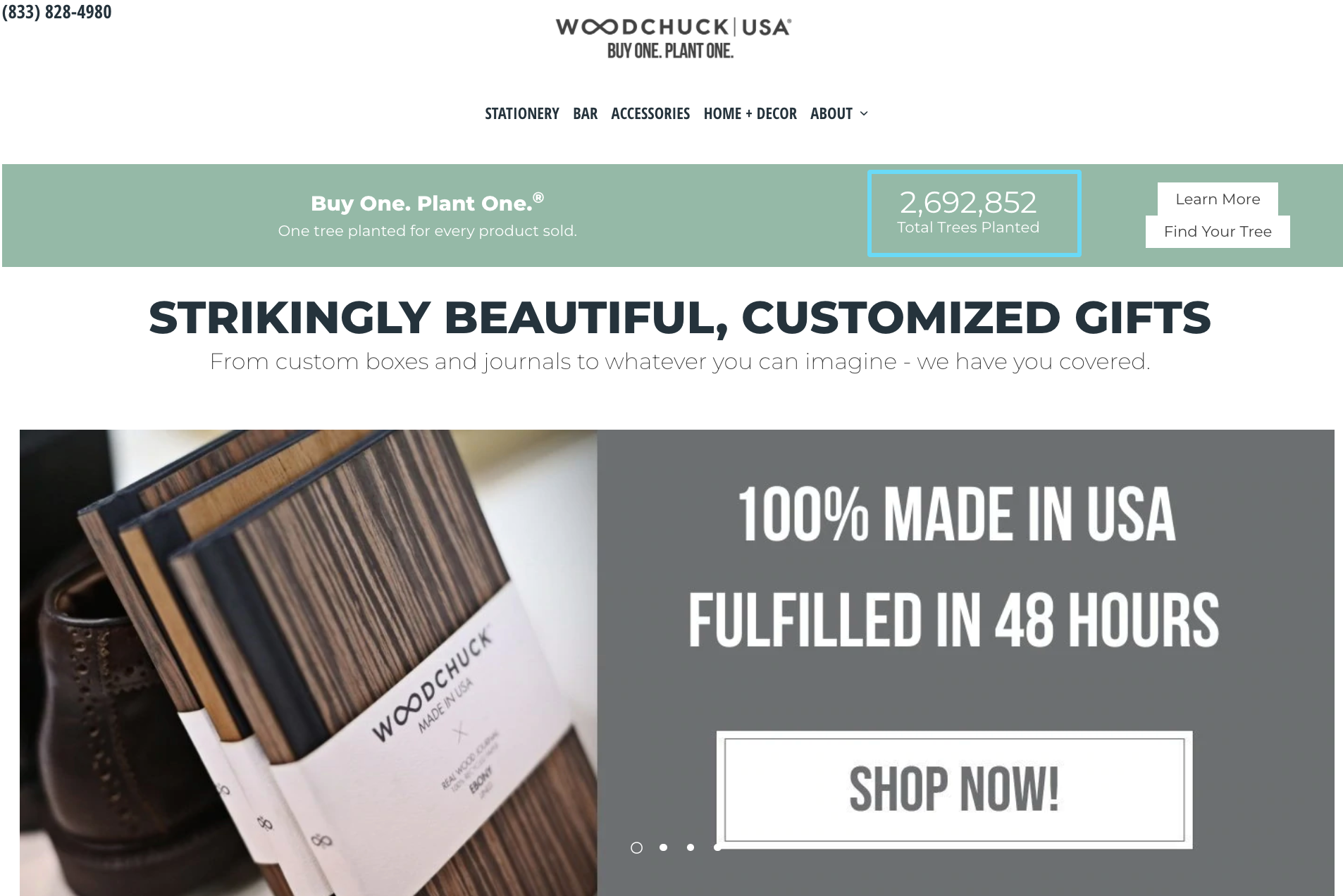
This is a subtle way of letting visitors know how many sales have already been made without seeming boastful.
This specific example also assures prospects that their purchase is sustainable for the environment; in today’s marketplace, sustainability is something many care about, which makes prospects more comfortable about purchasing from a brand that does their part.
And lastly… You know what, we’ll just let HelloFresh speak for themselves.
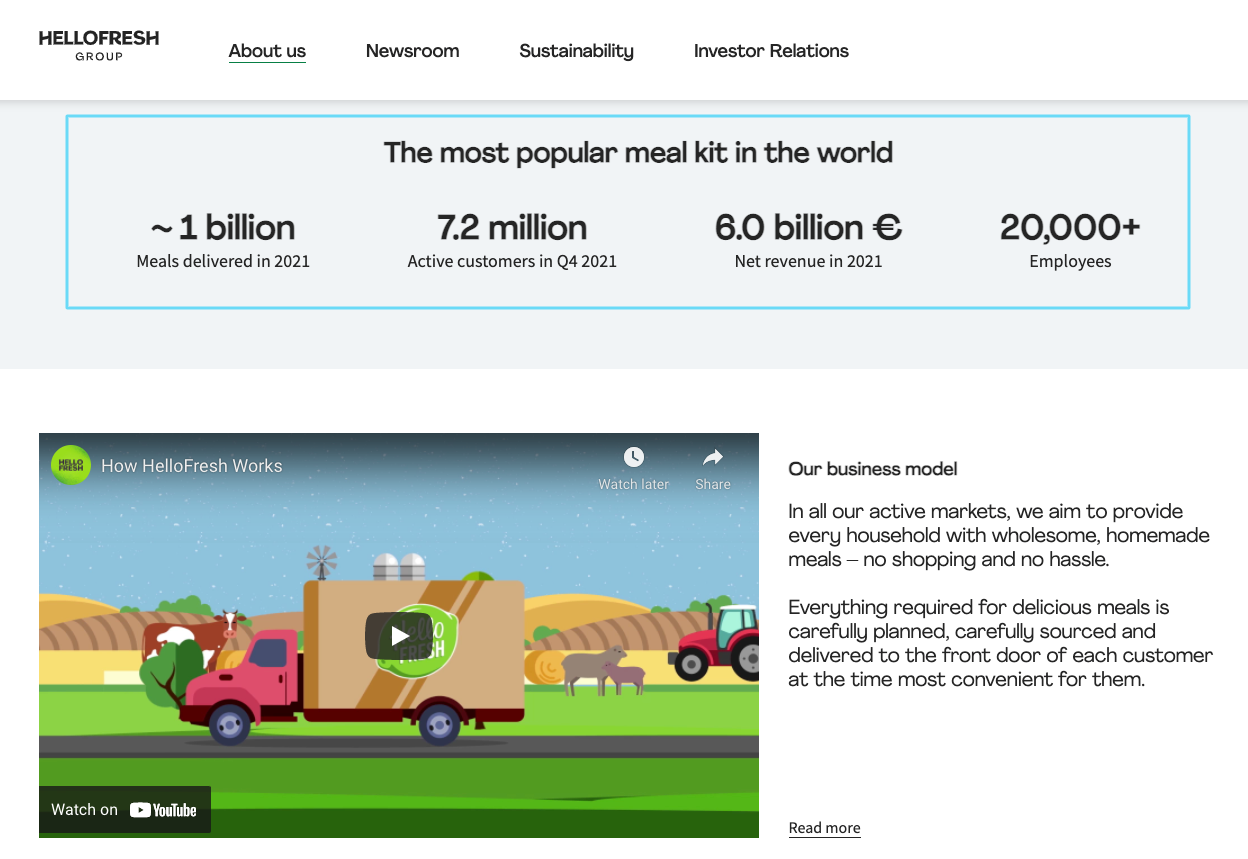
9. Your employees as brand ambassadors examples
Your employees are walking ambassadors. They’re proof of a business’s bloodline and provide the personal touch consumers are looking for.
Do you have a Team page? If not, create one.
When people see that there are real people behind the company, it makes them feel more comfortable to contact and eventually do business with them.
Here’s an employee highlight on our Team/About Us page:
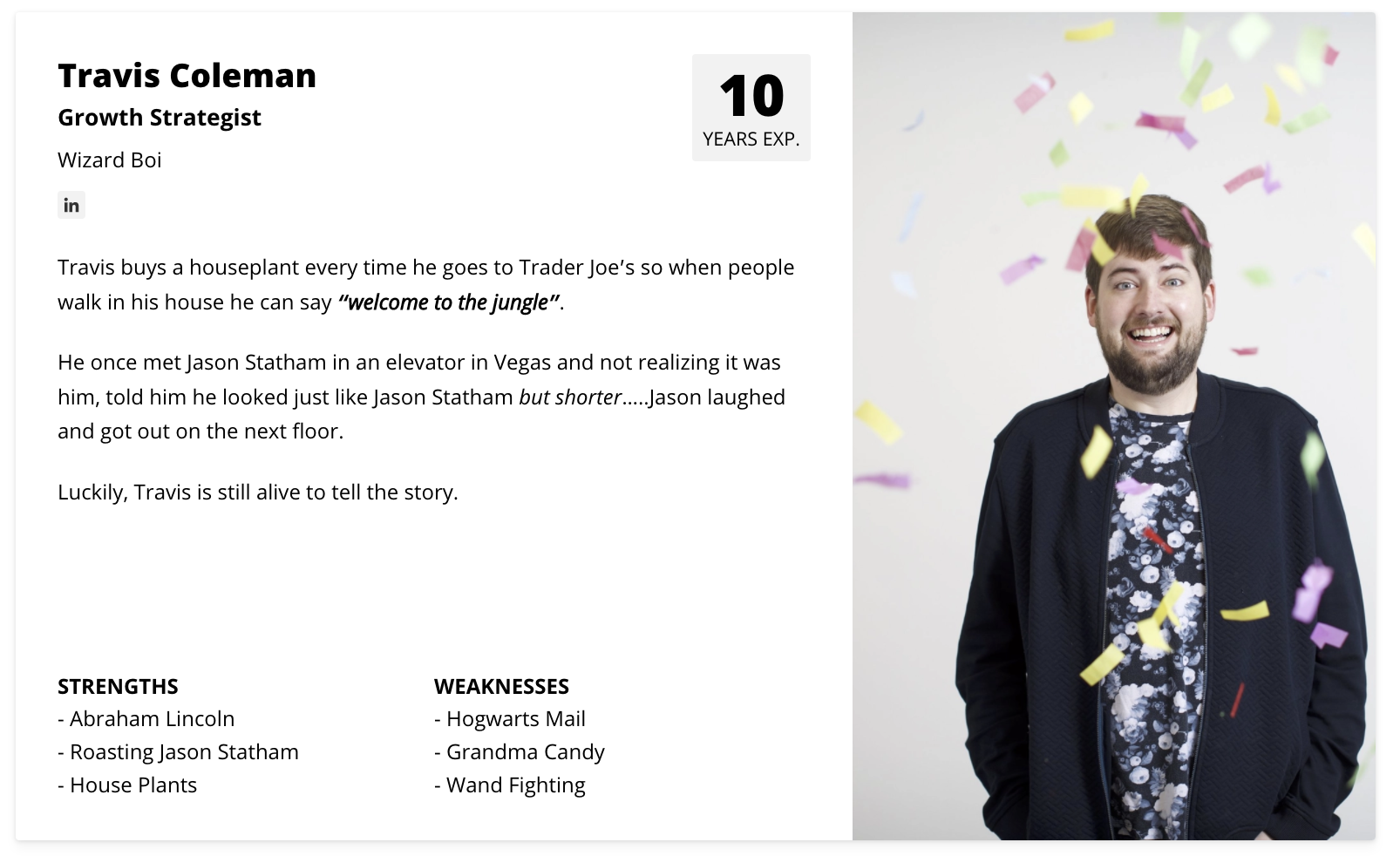
See? Doesn’t that face and bio help you get to know us better?
Similarly, sharing your employees’ reviews (e.g., linking to your Glassdoor or Indeed) is another great way to use this type of social proof.
Take a look at the personal and positive accounts from Hulu employees:
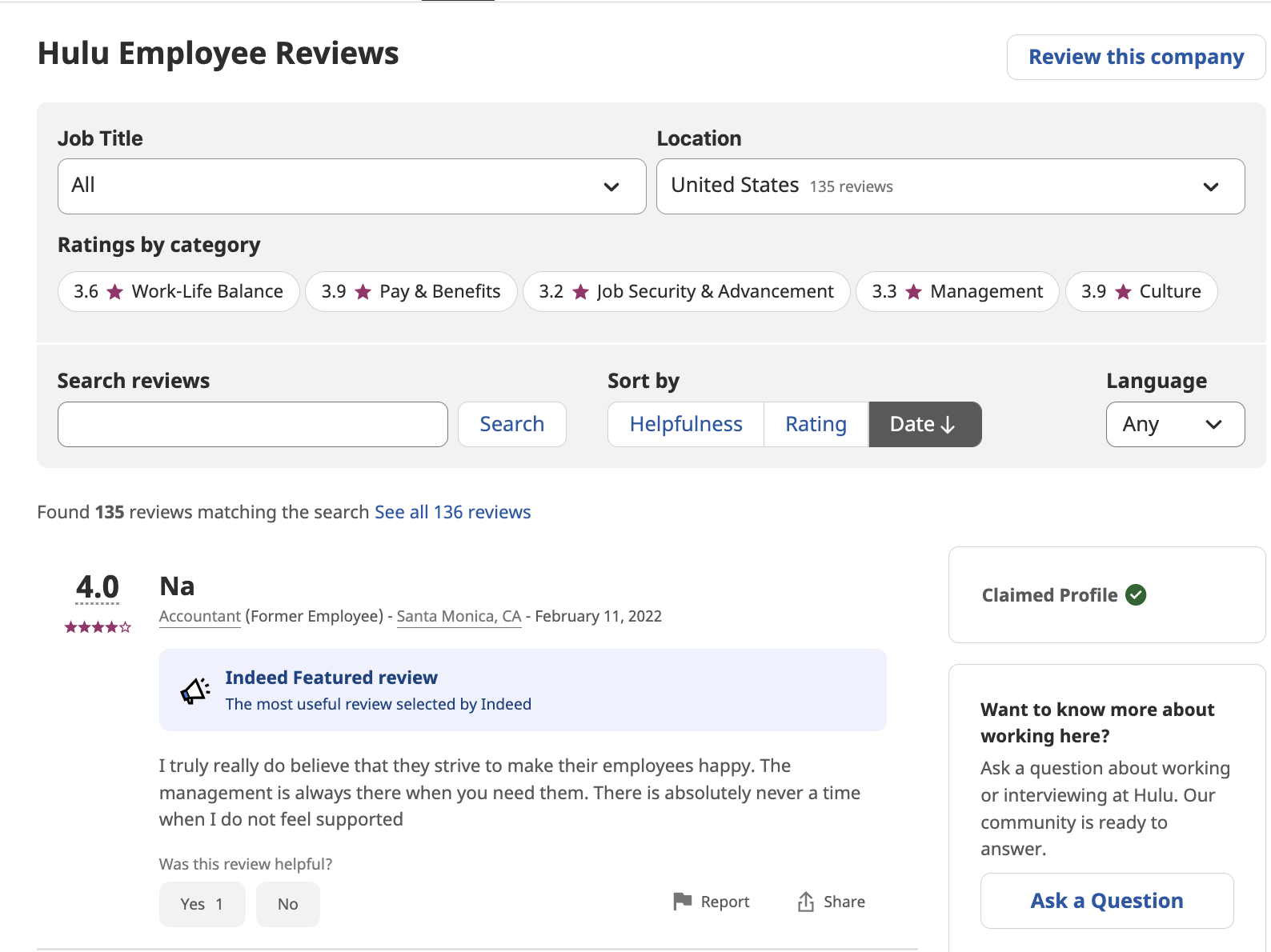
This helps consumers get a bigger picture and a better understanding of the inner workings of your brand. Even if they all aren’t positive reviews, the insider scoop still has the capacity to build customers’ trust—and that’s what’s most important here.
10. “Wisdom of your friends” examples
Your friends. You love ‘em. You follow their advice. You trust their opinions.
That’s why “wisdom of your friends” social proof is so powerful. This type harnesses friends’ influences over others.
It often comes in the form of what they’re liking on social media, brands they’re following, or products they’re sharing online with their friends (in person works, too).
Here’s a simple example of this:
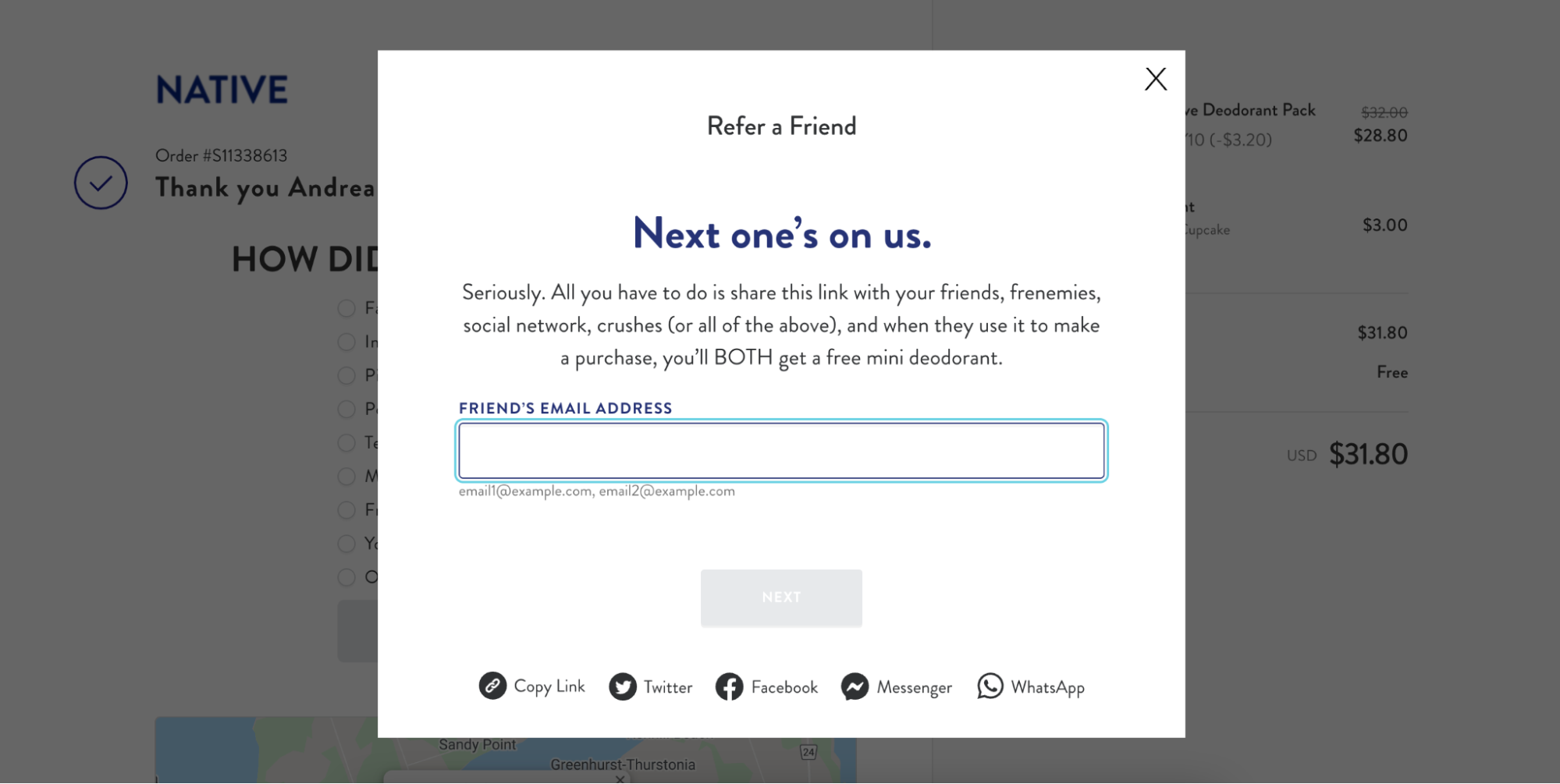
11. “Wisdom of the crowd” examples
“Wisdom of the crowd” is basically what everyone’s doing and the idea that you’d be wise to do the same. It’s the collective action or opinion of a large group of people.
And it’s true what they say: there’s strength (and wisdom) in numbers. Large numbers of people who have bought or used your product are comforting to prospective buyers. It tells them that they’re not alone and that their decision to join the masses is a safe bet.
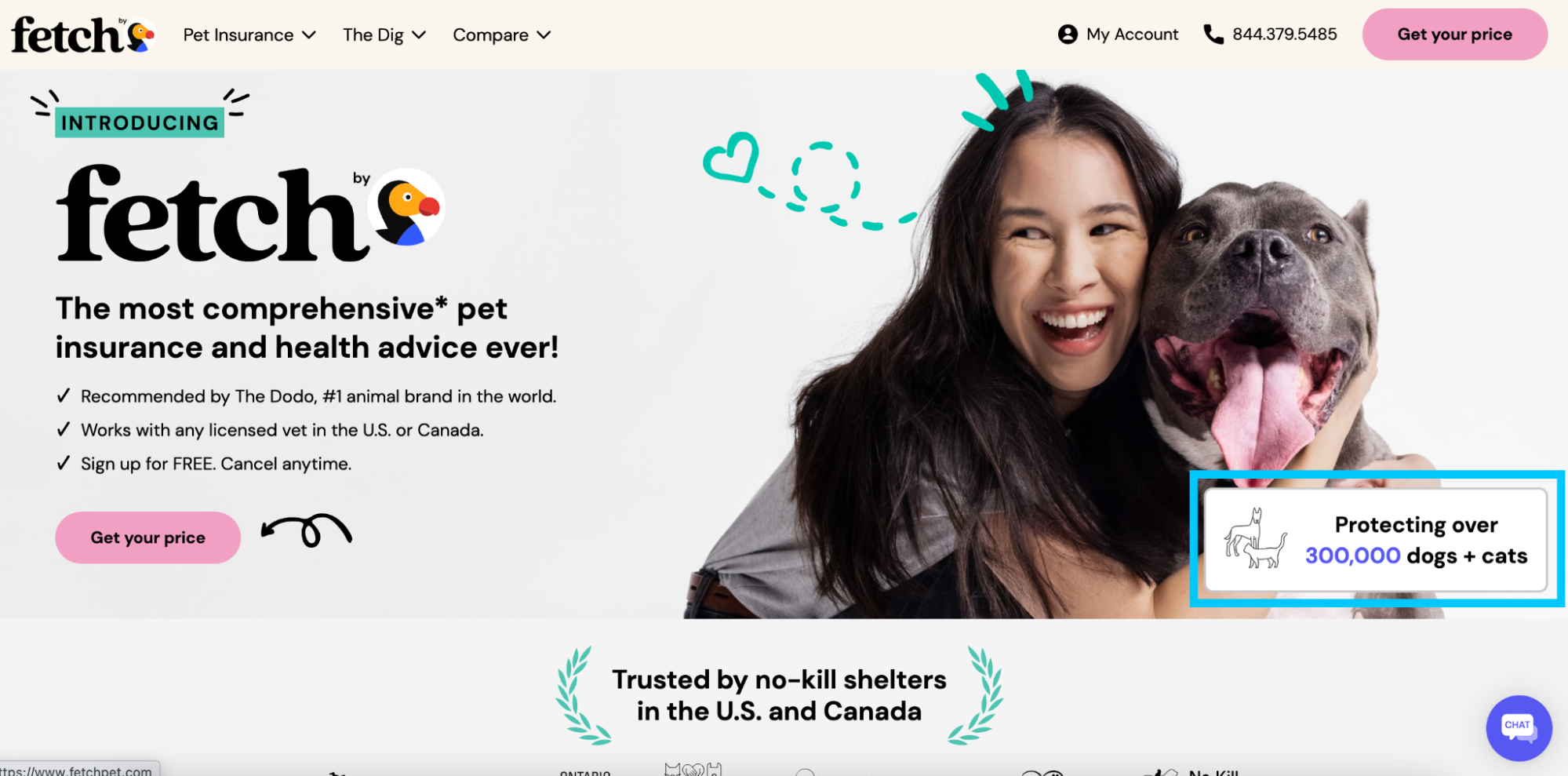
Same deal with the Caraway example below:

12. Positive press or PR examples
If you’ve received any positive press about your products or services, share it as soon as possible.
If your brand was mentioned on a morning show, a highly-revered publication, or anything similar, share it with the masses by having it live on your website or promoting it on social media.
Take a look at what Loftie does in the following example:
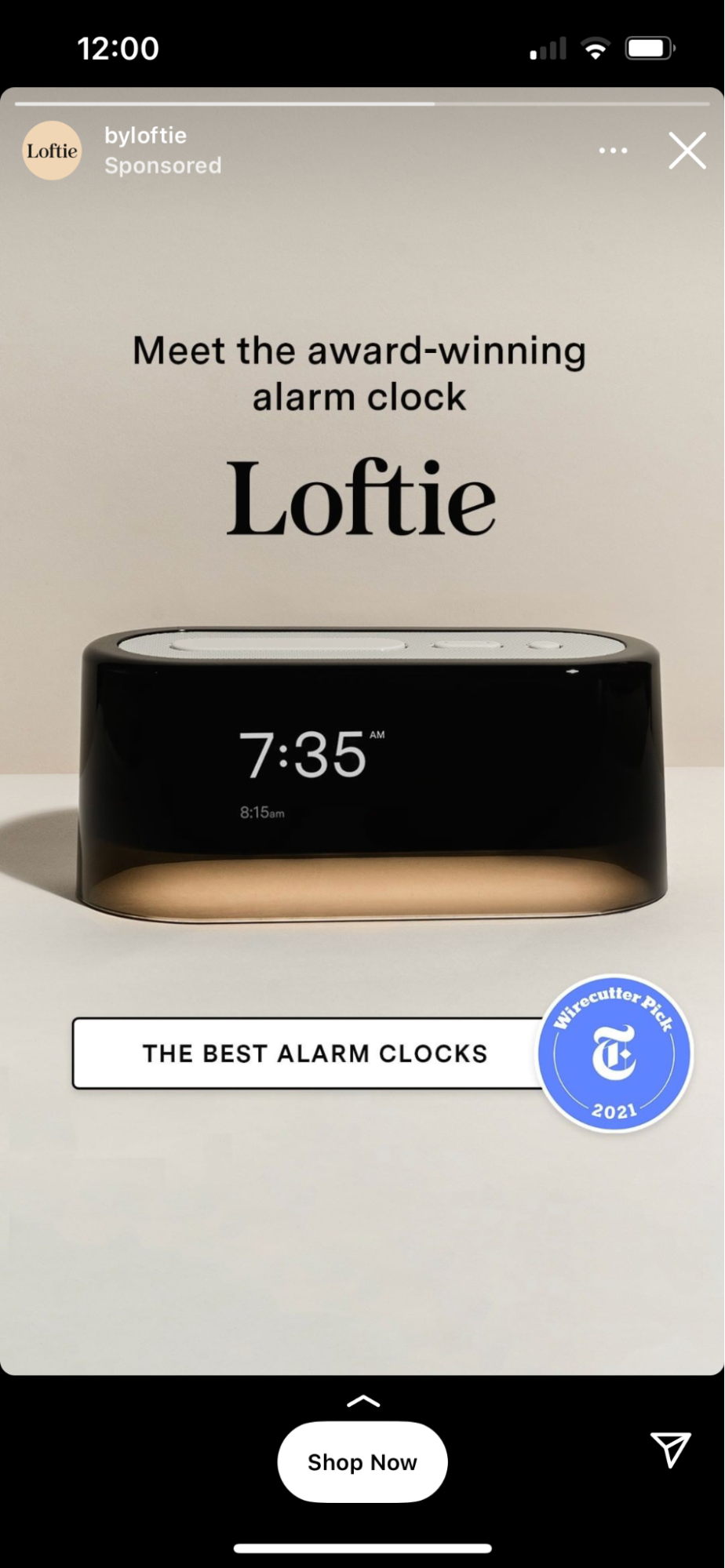
Popular cookware brand, Our Place, similarly shares the positive press they’ve received from Vogue in their Facebook ad.

13. Client list examples
This social proof type proudly showcases all of the happy customers and clients you work with. It’s an incredibly effective way of building your credibility and showing prospects that other big-name brands have trusted you.
When you include a client list, make sure you share the actual names and logos of the companies.
Why logos?
People recognize logos. (In fact, 75% of consumers recognize a brand through its logo.)
What they might not notice or care to even read through is a long laundry list of clients with no recognizable branding.
If you work with a stable of happy and/or big-name clients, use their logos and name-drop them. It’s how visitors will identify brands and forge that connection.
Peep how we did it below.
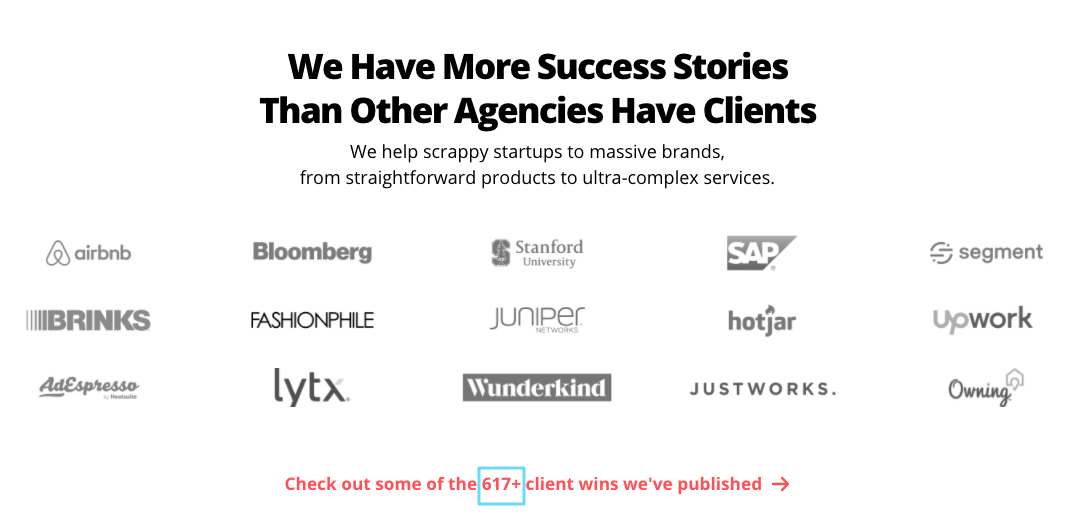
ClickUp does the same thing on their site, too:

Do’s and don’ts of social proof
Before you get slap-happy on the social proof, there are a few critical tricks of the trade to know.
Like most other digital marketing efforts, social proof is a delicate balance of tooting your own horn and playing it cool.
To strike that balance, here are our top do’s and don’ts of social proof.
Do’s of social proof
DO tell a story with your social proof
A story is what ultimately sticks with people. It’s a lot easier to remember how you felt reading about a company’s milestone or deed than it is to remember a whole bunch of numbers and figures on a website.
Take this Crocs story, for example.
They leverage their partnership with celebrity and professional athlete, Baron Browning, to tell the story of how they donated more than 30,000 shoes to a school district in need.
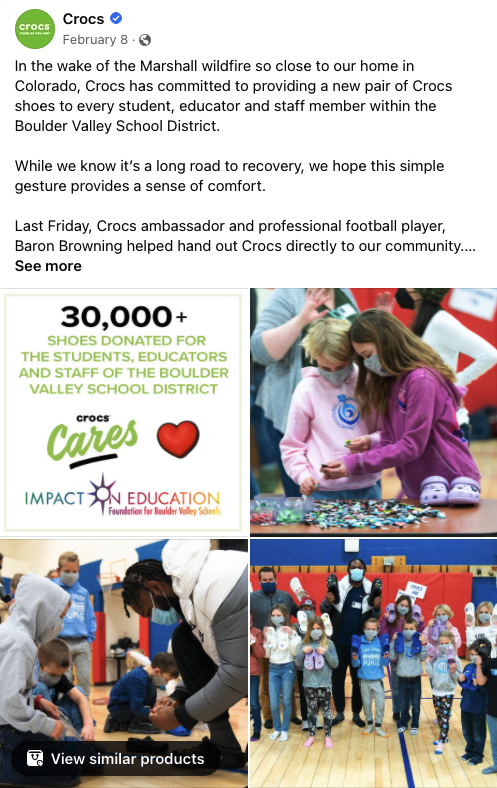
DO automate the follow-up process for reviews
Following up with customers to request reviews and user testimonials can be tedious and painstaking work.
Your customers are in no way required to give you a review, lend their time for an interview, or provide a testimonial on their own accord. You have to have a way of politely (and timely) asking for it in order to start generating social proof.
Keep in mind that people with bad experiences are 2-3 times more likely to post a negative review, so you really want to make sure to follow up for good reviews to level out the playing field.
Just make this as expedited as possible for both yourself and your customer by automating the follow-up process.
Etsy does this like a pro. Check out their automated emails requesting a star rating and user review:
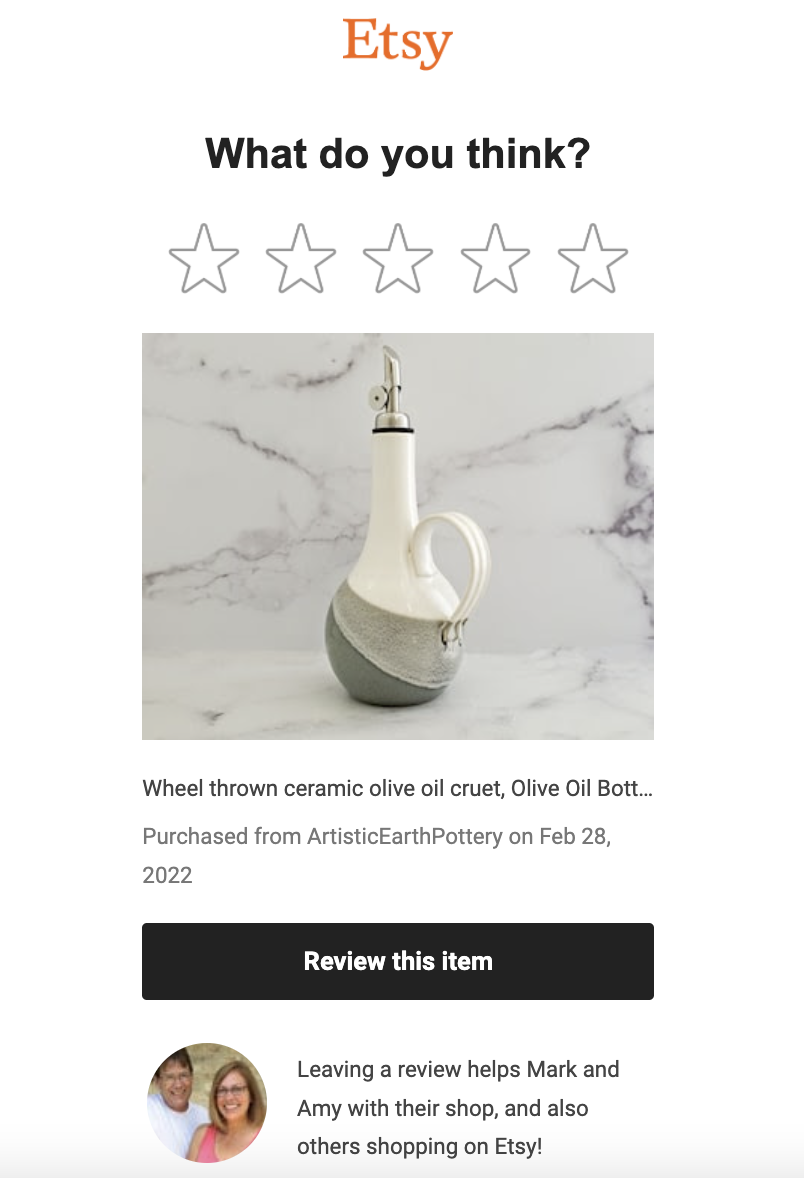
Use prompts, chatbots, templates, and always keep it non-threatening in order to maximize your chances of collecting the social proof you need.
Here are some CRM platforms with follow-up features that can help:
DO keep all your platforms up to date
When 81% of people think less of a business with an outdated website, it’s essential to keep your site up to date and with the most current information and social proof.
In fact, outdated information can actually have adverse effects and create what’s known as negative social proof.
When your website’s contents are severely outdated and packed with social proof that’s no longer valid or current, your visitors are wondering if
- you’re still in business
- you care about your reputation or how your business comes across
Make sure your site is also fully optimized for all visitors. A/B test different variables to ensure it’s top-notch, and don’t forget to pay attention to the
DO use real pictures and names of people
This is a no-brainer. You want to assure your visitors that real people use your product and are in business with you.
If all you have to offer is a bunch of anonymous comments or stock images, you’re letting potential customers think twice about working with you.
Do it like Weight Watchers does here:
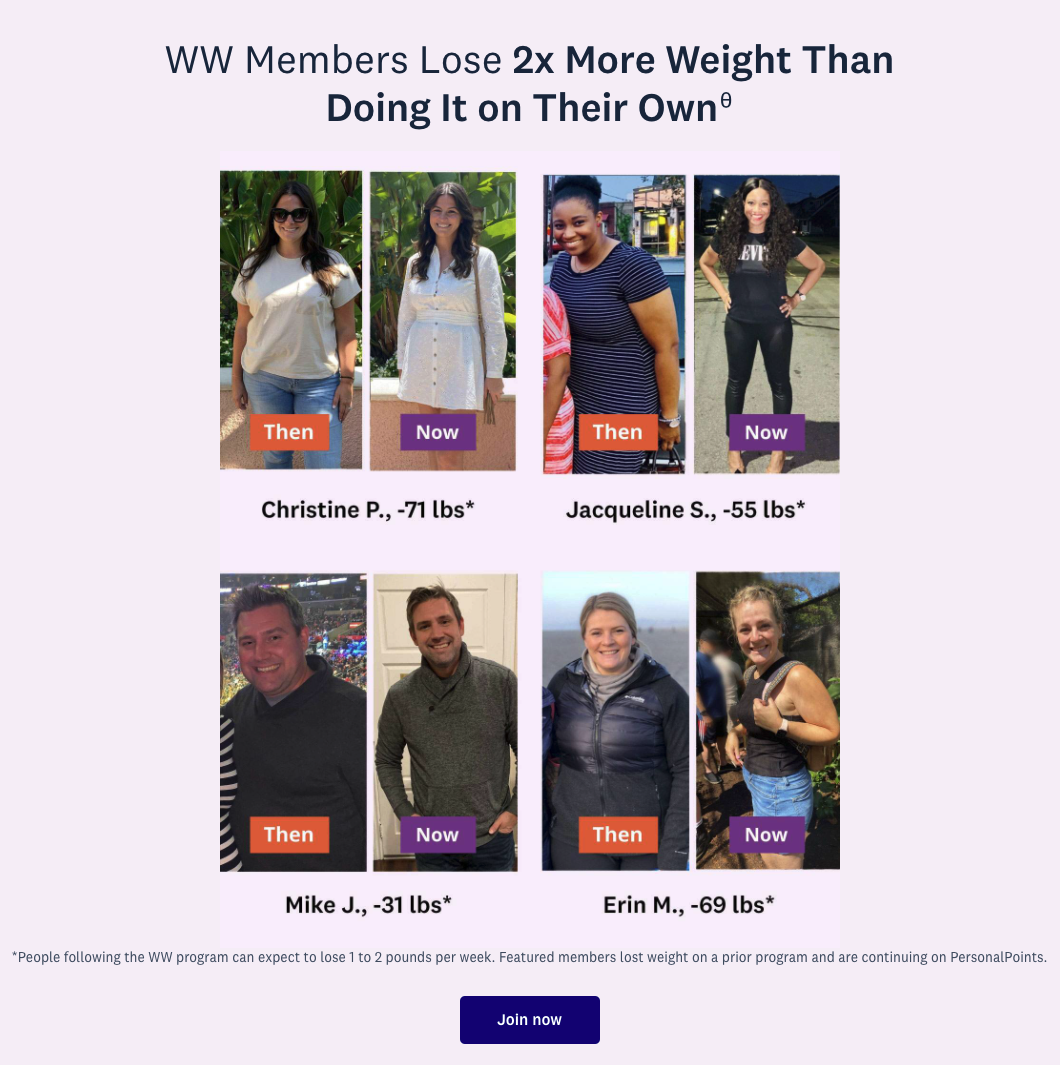
DO provide as much information about the reviewer as possible
Got the first names and real pictures of all your reviewers?
Good.
Now, take it a step further and provide even MORE information to really bring it home.
The more information, the better. It paints a complete picture of the person behind the review, and this amount of information can be the deciding factor for many prospective buyers that need the slightest push.
If possible, include the reviewer’s
- full name
- where they’re from
- the product(s) they purchased
- when they made the purchase
- the logo of the company they work for
- a fun (but relevant) fact
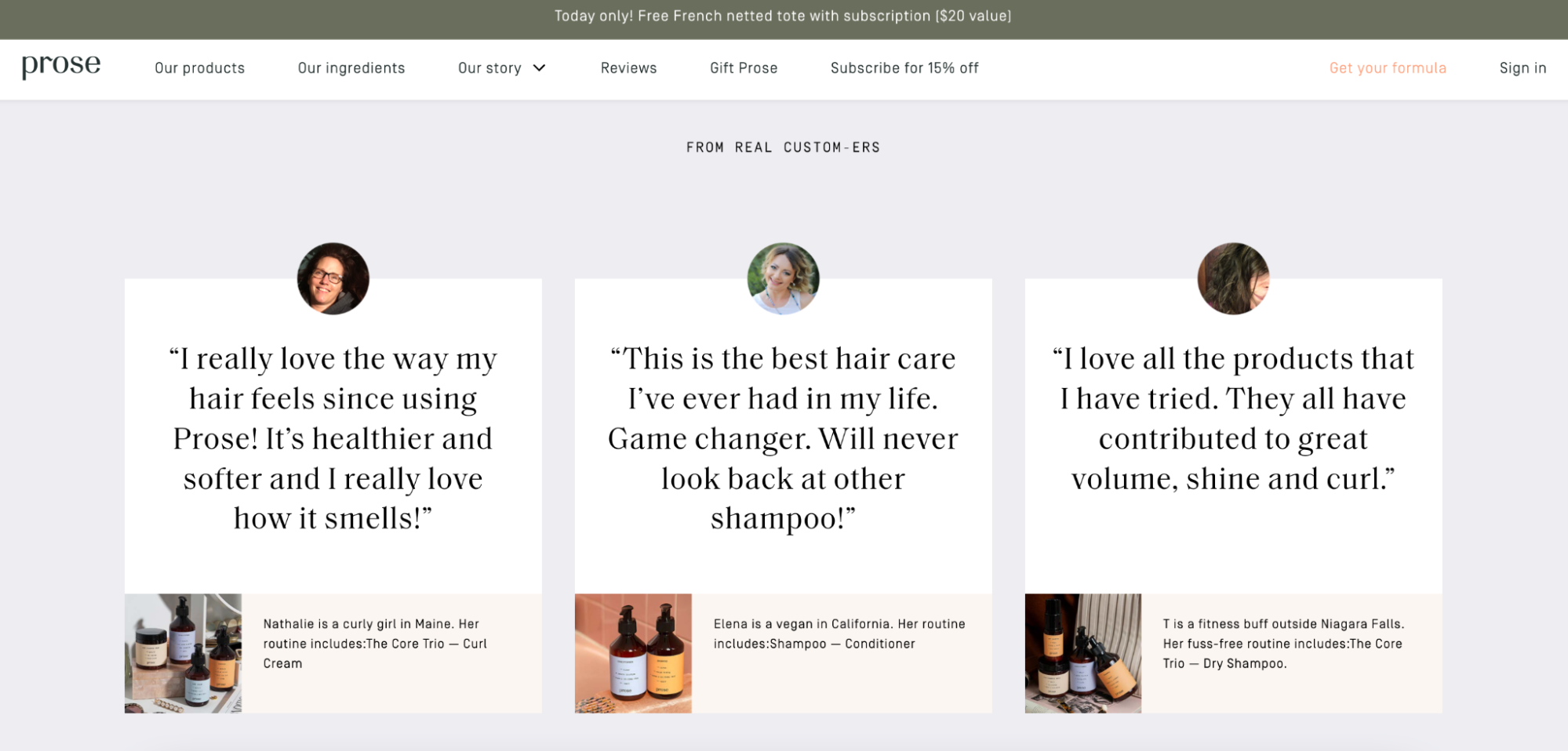
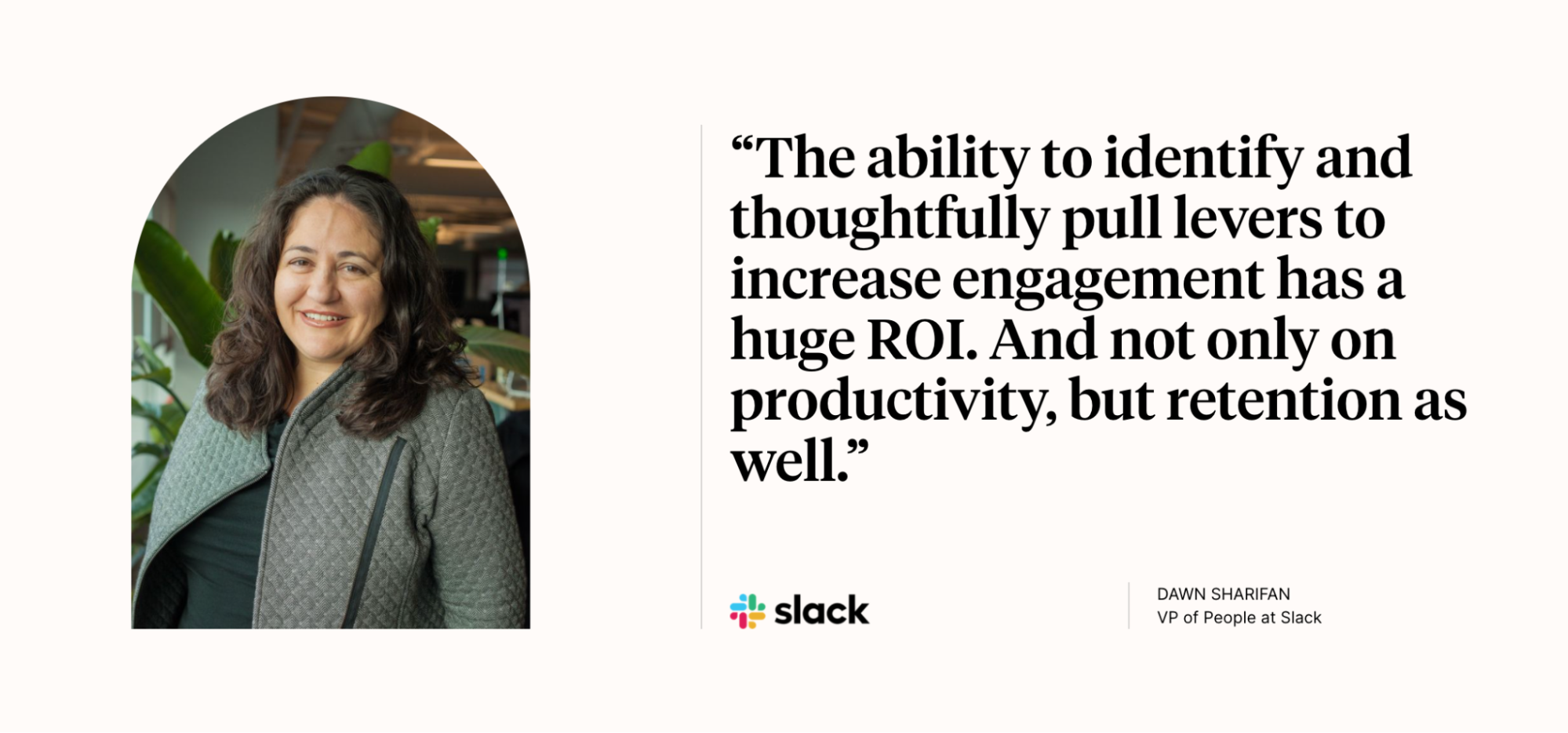
DO add social media buttons
Your social media platforms are another great way to pack on even more social proof.
A well-curated social media presence validates your legitimacy and activity outside of your website. Customers like to see that brands provide extra ways to scope out what they’re all about.
They can view more comments, content, and maybe even a brand’s stance on specific issues that helps prospects make their purchase decisions.
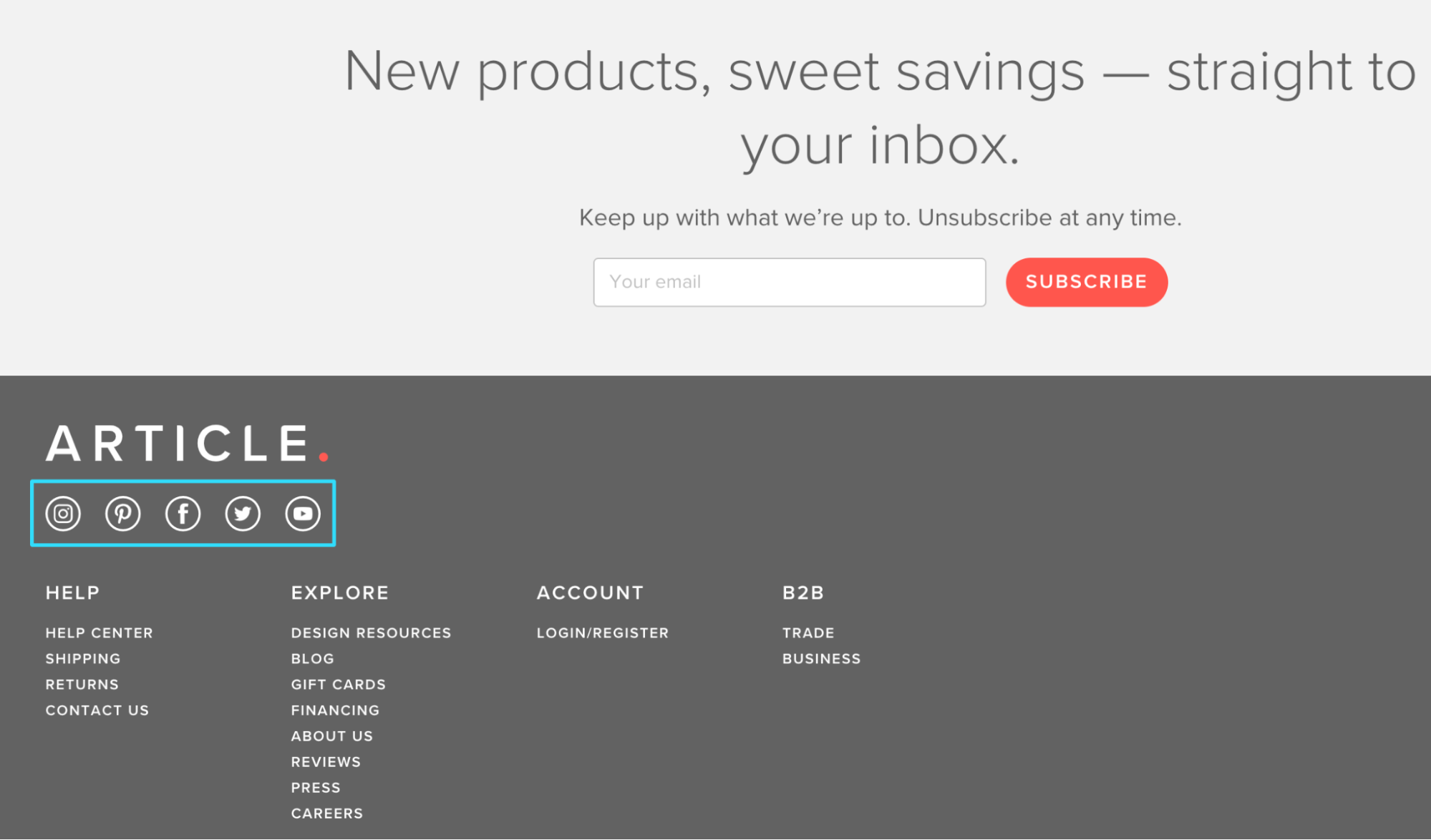
Don’ts of social proof
DON’T worry if you get a bad review or negative piece of social proof
Negative reviews happen even to the best of us.
When this does happen, it’s important to remain calm and remember that there is a way to spin this negative social proof into a positive experience.
When you receive a negative review or comment, be sure to respond to the dissatisfied customer and do your best to resolve the issue.
This level of customer service is actually highly regarded by consumers. Here’s how Papa Johns turns a negative comment into an opportunity to retain this customer and make them happy again:
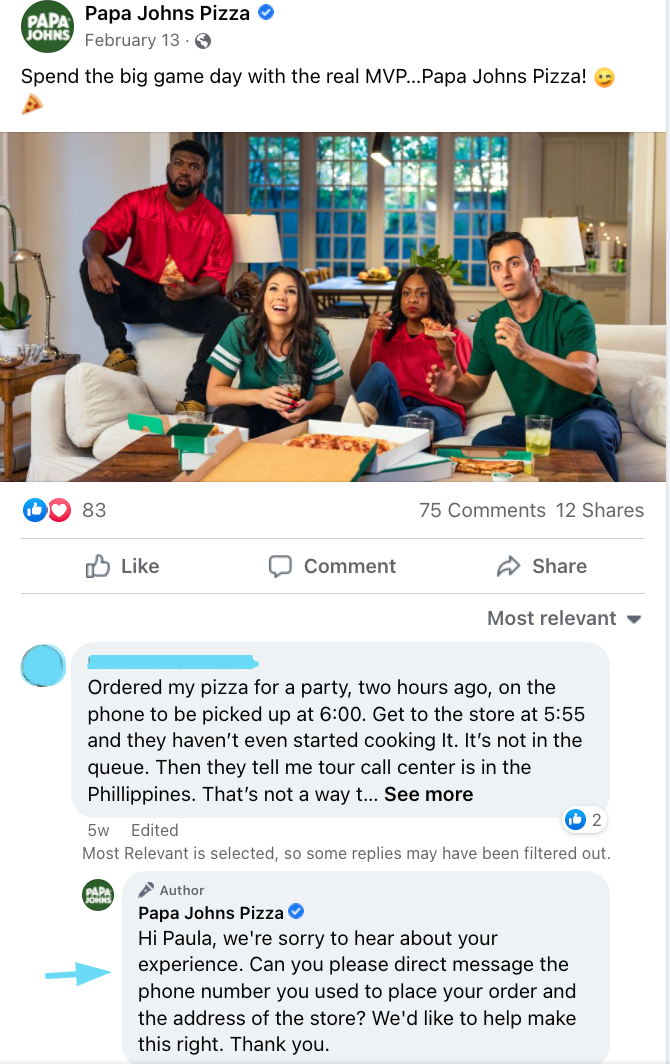
DON’T forget to link to your features and publications
While it’s great to share your features and publications, you can add to your negative social proof by forgetting to link to those sources.
It may make visitors question the legitimacy of those claims. They might think, “Well, anyone can just falsify a quote or bend the truth a little bit.”
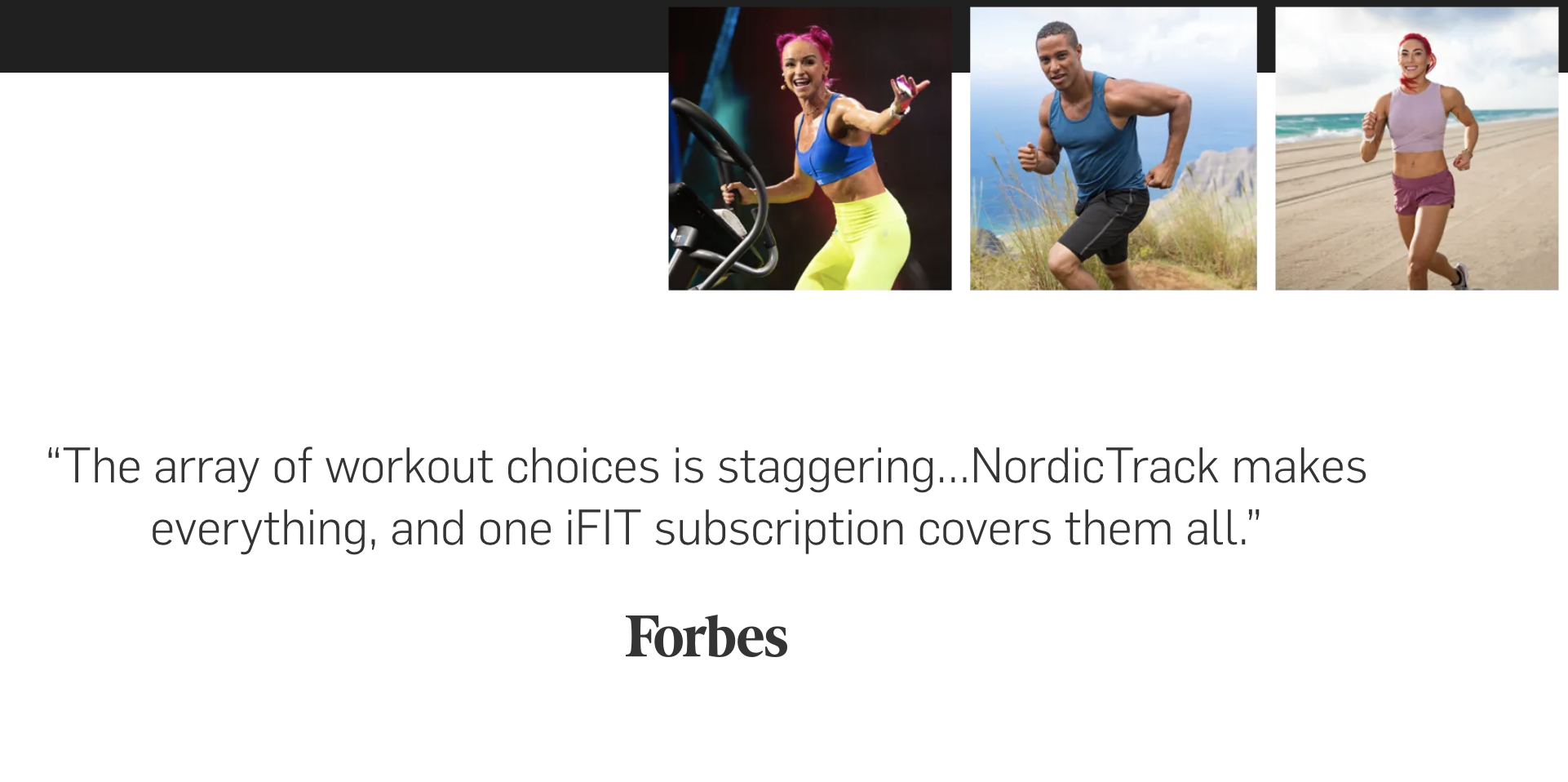
While this Forbes quote is strong, it lacks the extra proof to really build trust.
So make sure to credit the publication, the actual person who said/wrote something, and lead your visitors to where they can see more and check it out for themselves.
DON’T follow up at the wrong time
We advised you to automate your follow-up process for reviews or testimonials.
Here’s the flipside to that coin: don’t follow up at the wrong time.
Your customers and prospects alike are real people who lead their own lives. Make sure you’re following up at appropriate times (avoid major holidays, weekends, and late nights). Your follow-up could end up driving them away, and what’re you left with?
Whole lotta nothin’.
In addition, give them time to try out your product before asking for a review. If you’re asking right after they order, before they receive the product or set up your service, you’re bound for failure.
DON’T have a weak or spammy comments section
Remember that negative social proof we talked about?
This is exactly what can contribute to that.
A weak comment section suggests that there aren’t enough customers or hardly any good things to say about you. A spam-filled comment section suggests that comments are either bought, written by the brand, or a result of bots.
All are red flags and work against the social proof you already have.
DON’T include low social proof tallies
Low social proof tallies scream amateur and add to your negative social proof.
If you don’t have a huge social media following, a large client number, or a lengthy list of subscribers to share, wait until you do.
If you only have 15 subscribers for your newsletter or have only helped five organizations meet their goals, hold off on publicizing those wins until you can really pack a punch.
DON’T buy followers, fake reviews, or likes
Don’t do it. It wastes money and makes you look bad. Plain and simple.
Need more proof that buying your engagement is a terrible idea?
AdEspresso ran an experiment in which their made-up company set up three Facebook pages, bought Facebook likes (from two different sellers) for two of the three pages, and then posted the same content to each page.
The pages with the paid likes got zero engagement.
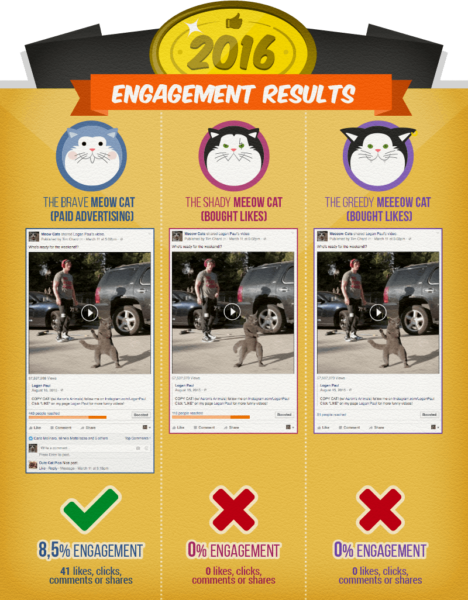
DON’T spam influencers
Influencers aren’t shortcuts; you have to earn their attention by creating a great product and having an authentic, personable online presence.
That last point can apply to all aspects of social proof, really. The better your product and service, the more authentic you are; and the more you invite people to participate in the conversation, the more people will want to be in conversation with you.
As the conversation grows, your fans and customers will start doing most of the talking and inviting new people to learn about your product naturally.
4 quick tips to improve your social proof efforts
Now that you have the do’s and don’ts, we want to equip you with four last tips to take your social proof efforts to the next level and help increase your conversions. (If you want a whole slew of tips on how to increase conversions, check out our blog here.)
1. Incentivize your employees
Have you asked your employees to share positive news about your company on social media? Many employees do this without asking—especially if your company is a great place to work—but it doesn’t hurt to ask them to signal-boost on your behalf.
Even something as simple as inviting employees to participate in a company-related hashtag can help get the word out.
You can incentivize your employees to boost your social proof through
- a contest awarding the most social shares
- offering prizes or gift cards for referrals
- giving bonuses if they hit social-proof specific quotas
2. Add social proof to your emails
Are you including social proof in your emails and newsletters?
You should be. Remember that any content you create can be improved by a testimonial, a review, an influencer, or a similar source of social proof.
Loom adds a customer review to their “Don’t Miss” round-up emails.
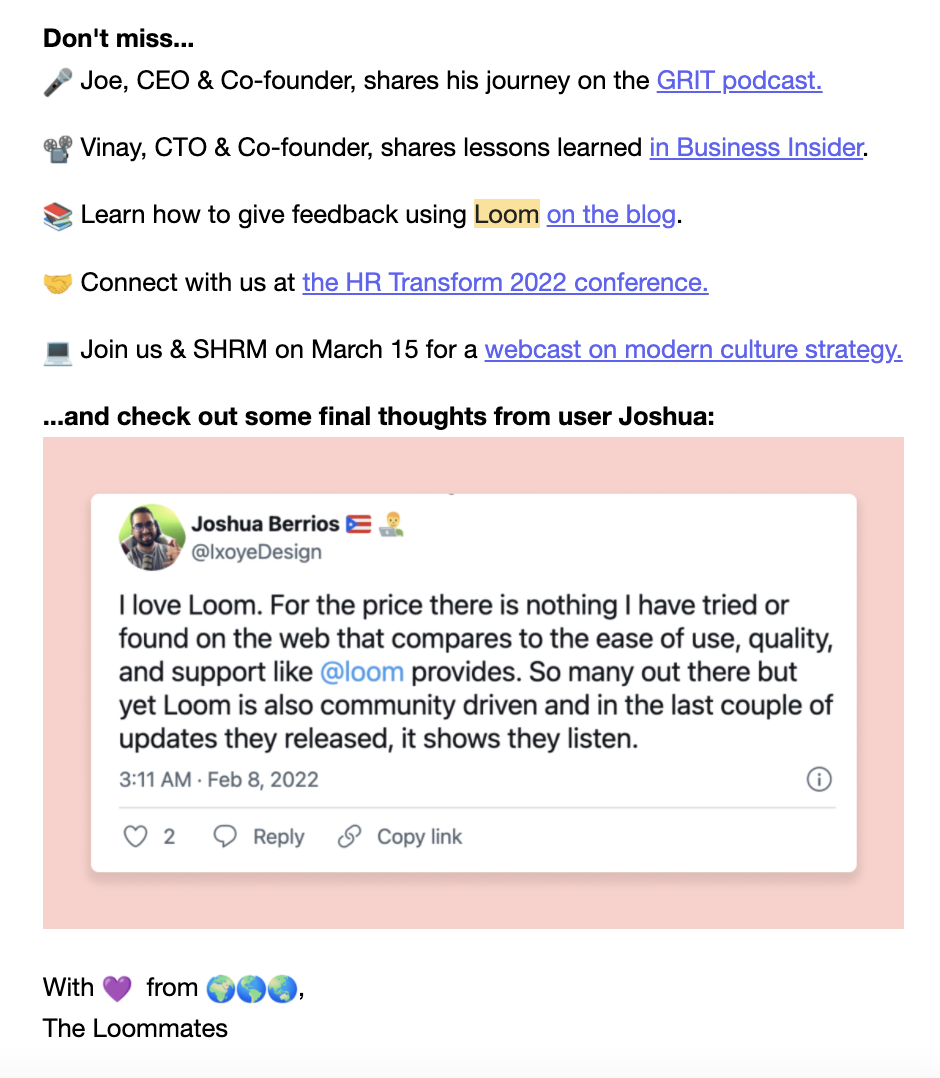
And don’t forget to add your social buttons to your emails, too.
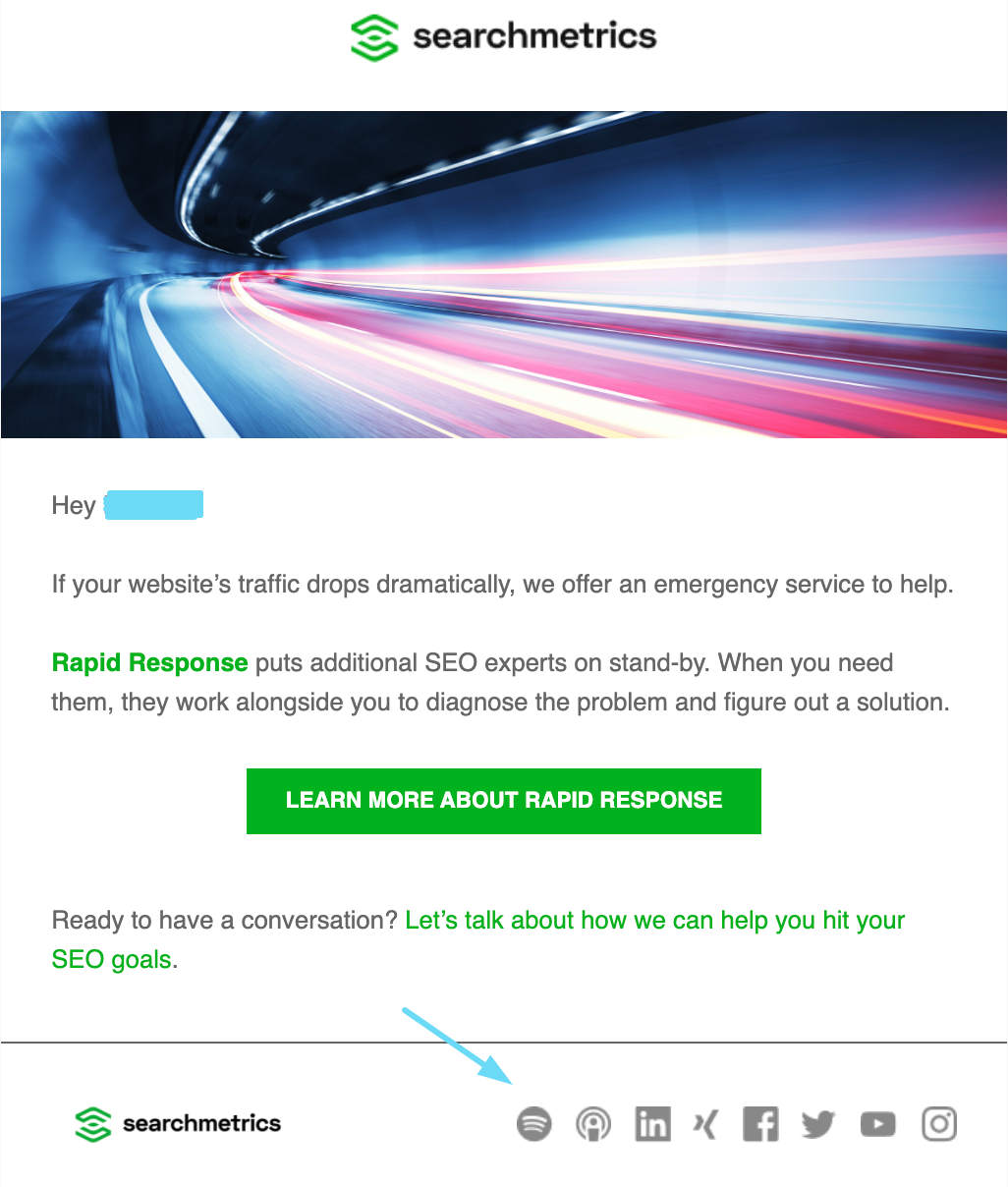
3. Create surveys and showcase the results
Surveys are the perfect way to collect data and engage with your customers. Create simple feedback surveys for the sole purpose of gathering social proof.
Make sure to keep them short and simple for people to complete, and ask the questions that will help you gather the best social proof (e.g., “Would you recommend our business to a friend or family?” “Rate your experience with us on a scale of 1-5.”)
Then, once you’ve collected enough responses, present your findings and paint your brand in the best light.
Here are a few survey creation tools you can use:
4. Develop a customer referral program
What’s an amazing way to spread the word and generate business (that could potentially lead to more sources of social proof)?
Referral programs.
Referral programs are a win-win-win. They’re awesome for the people who make the referral, the people who receive the referral, and for you.
Referral programs don’t have to be complicated; you can keep them simple just like SkinCeuticals does here:
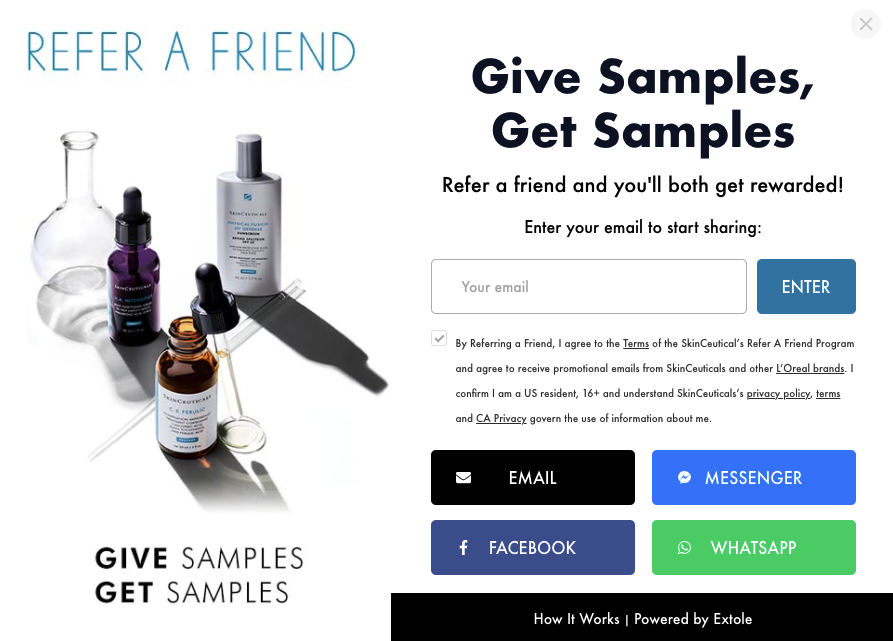
Take these social proof examples and take off
It’s evident that social proof works and that the power of social proof is undeniable. Social proof can amplify your company’s reputation, build customers’ trust, and boost that bottom line.
It’s essential to include it in your marketing strategy.
By now, you should have a hundred ideas on how to amp up your social proof. Go on and collect those star ratings, product reviews, and show ‘em off to the world.
Welp, we think you’re pretty prepared.
All you need now is a few extra conversion tips to truly take off. 🚀